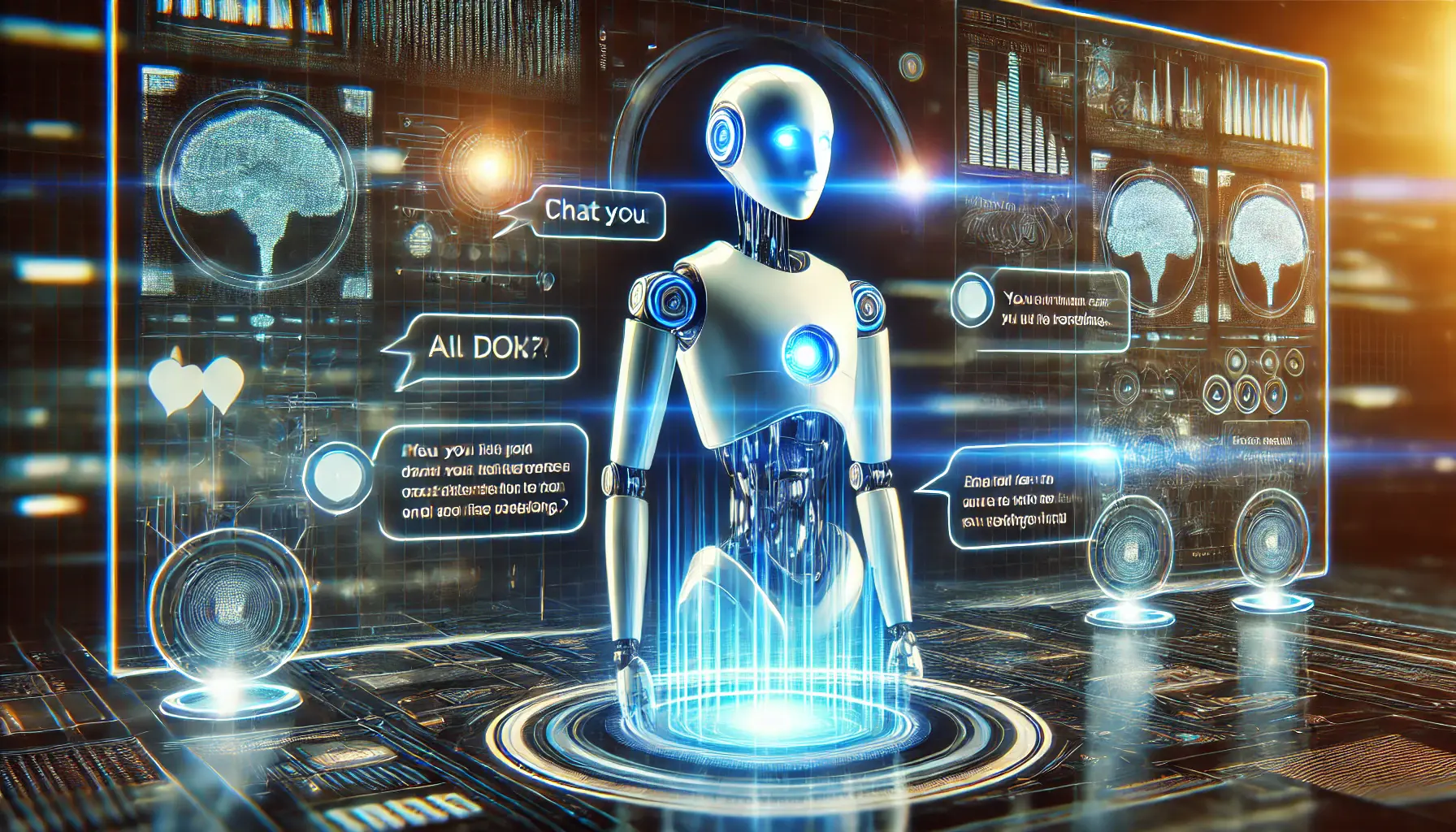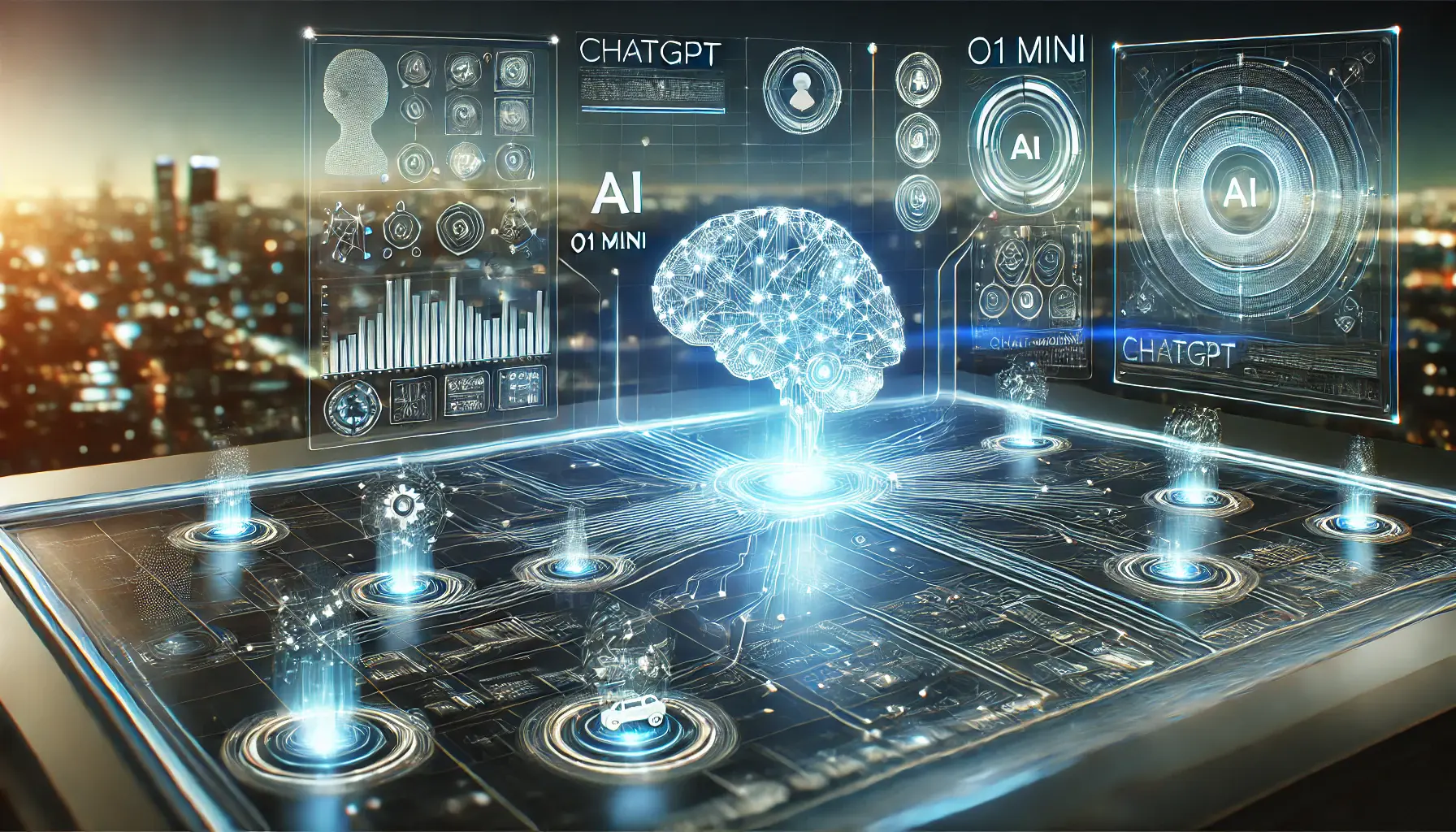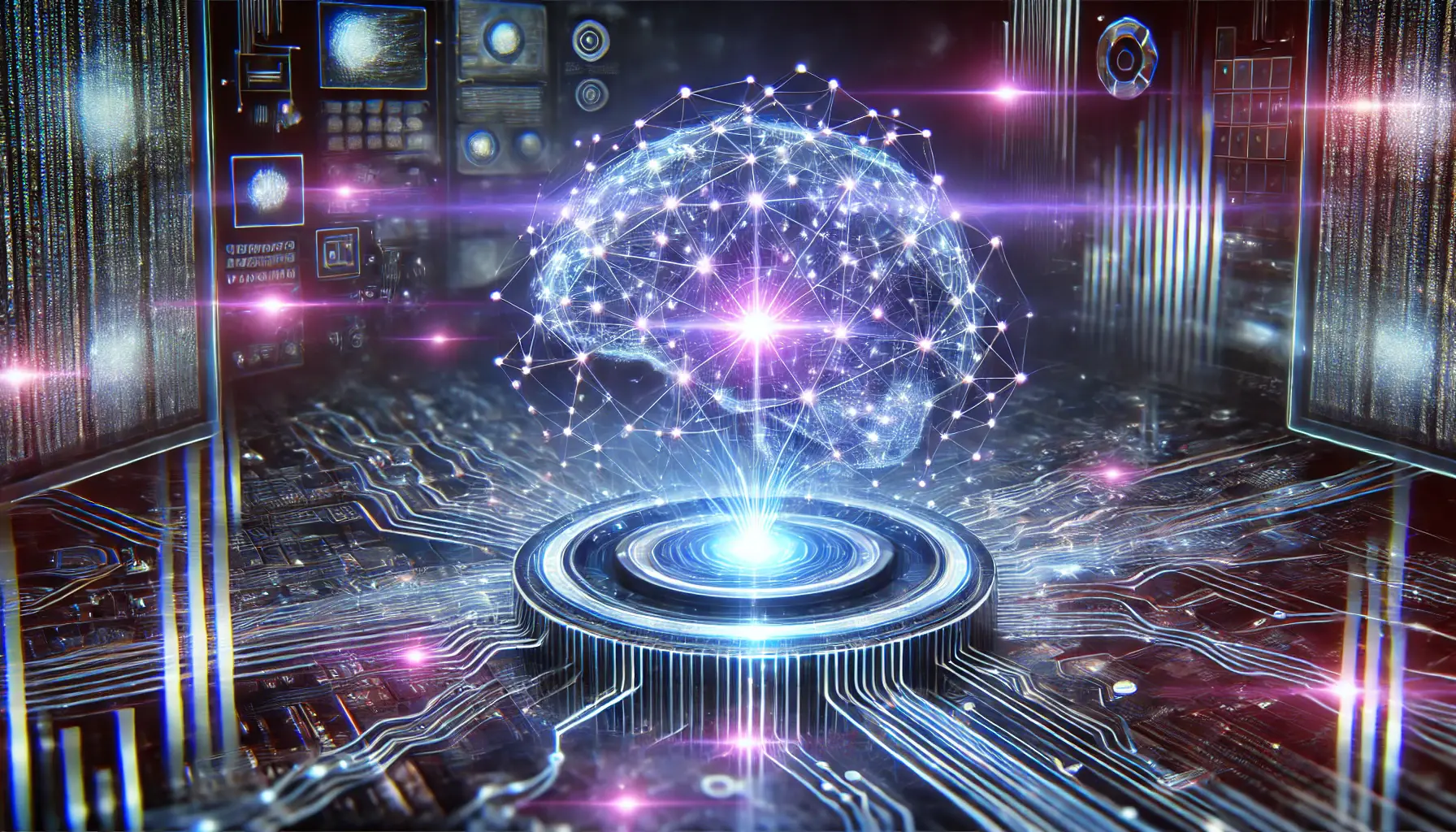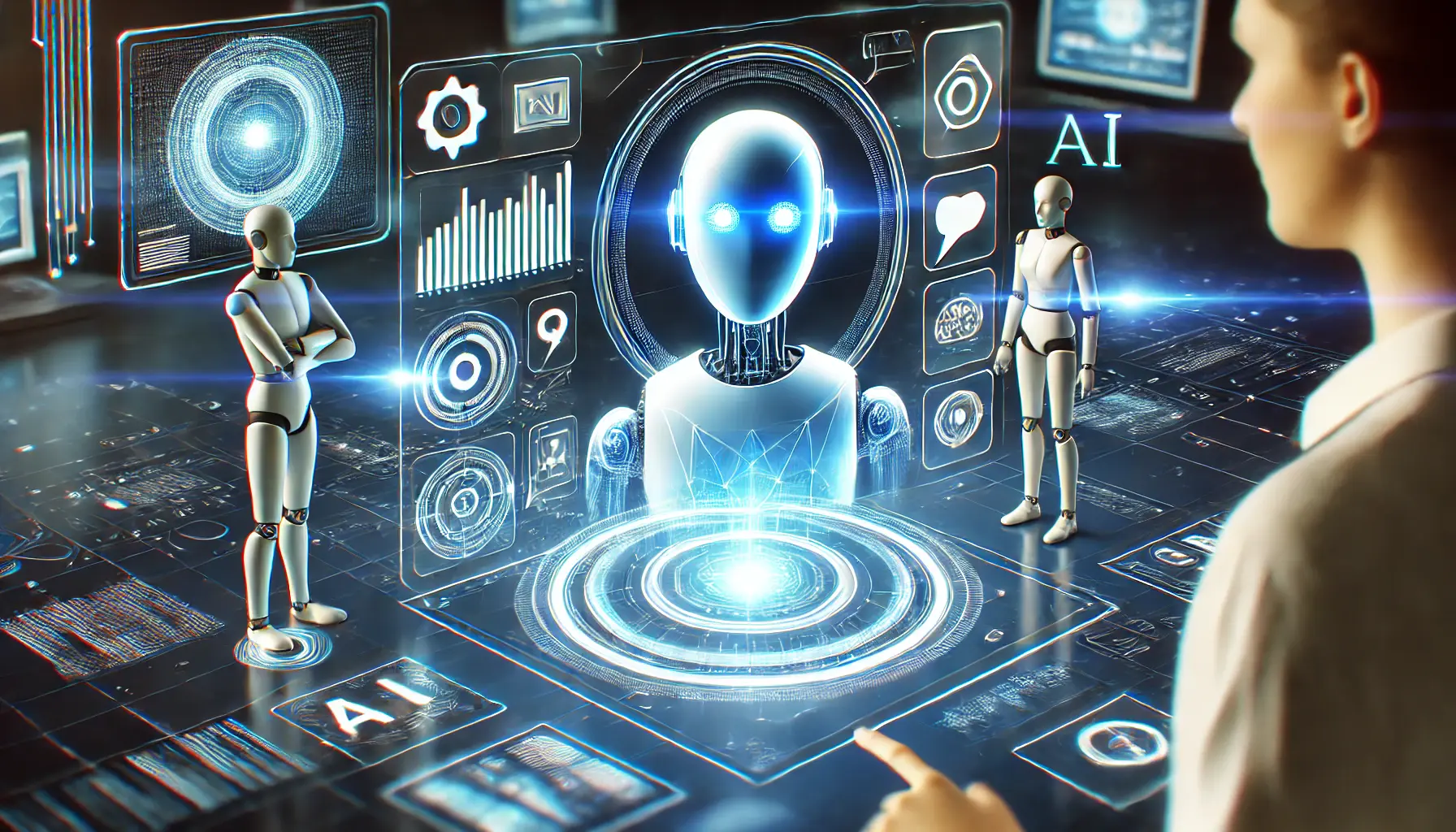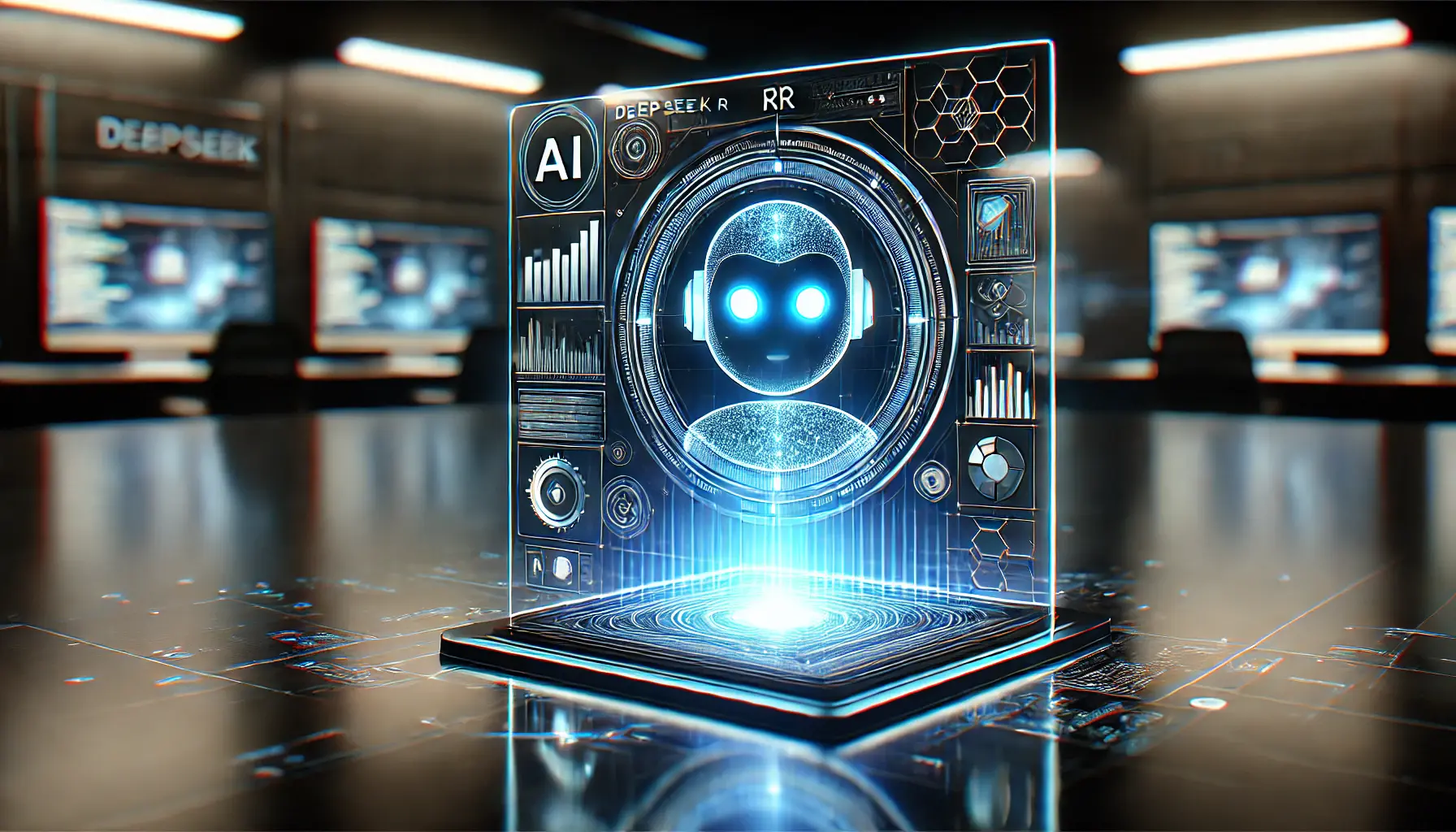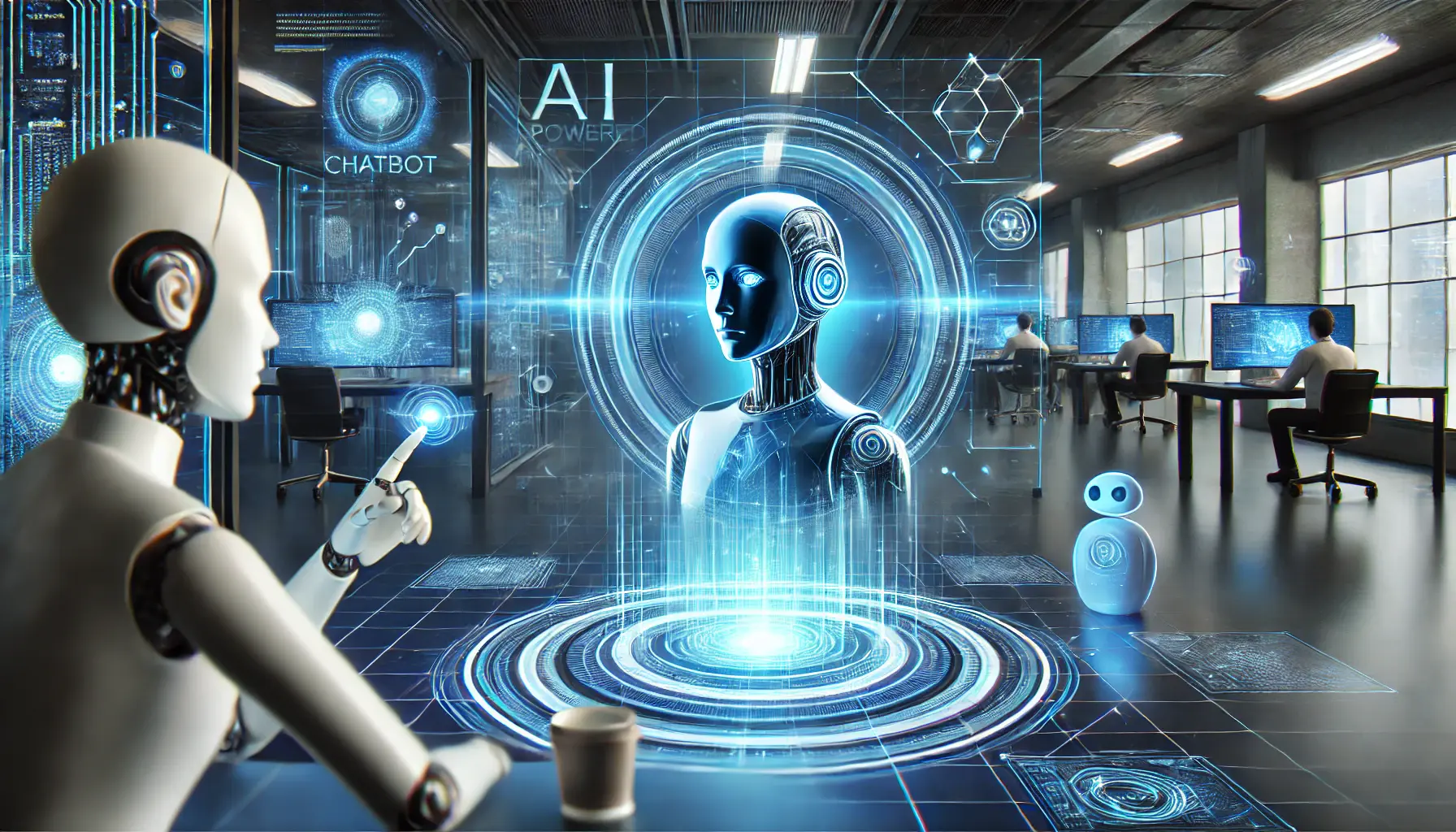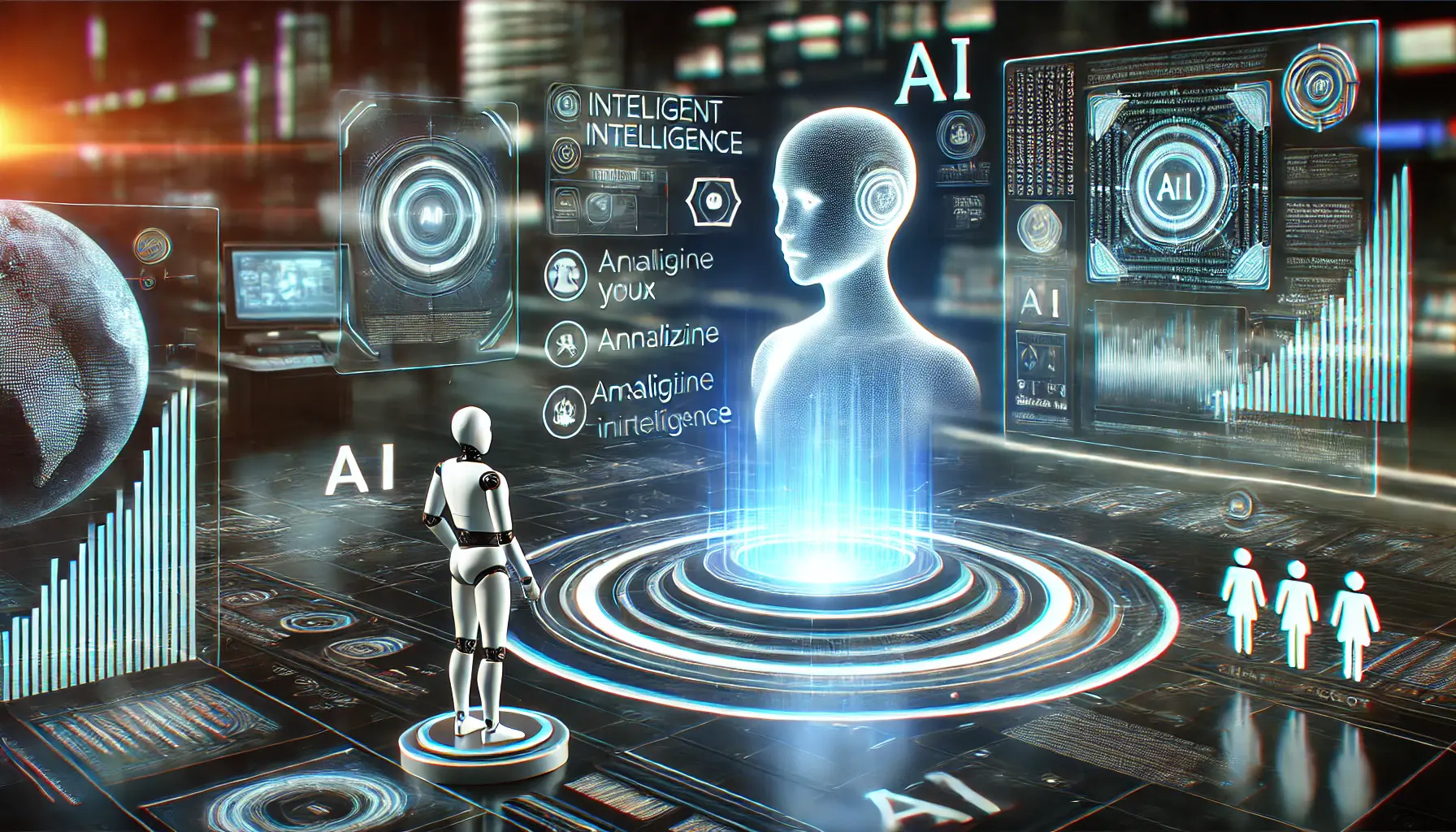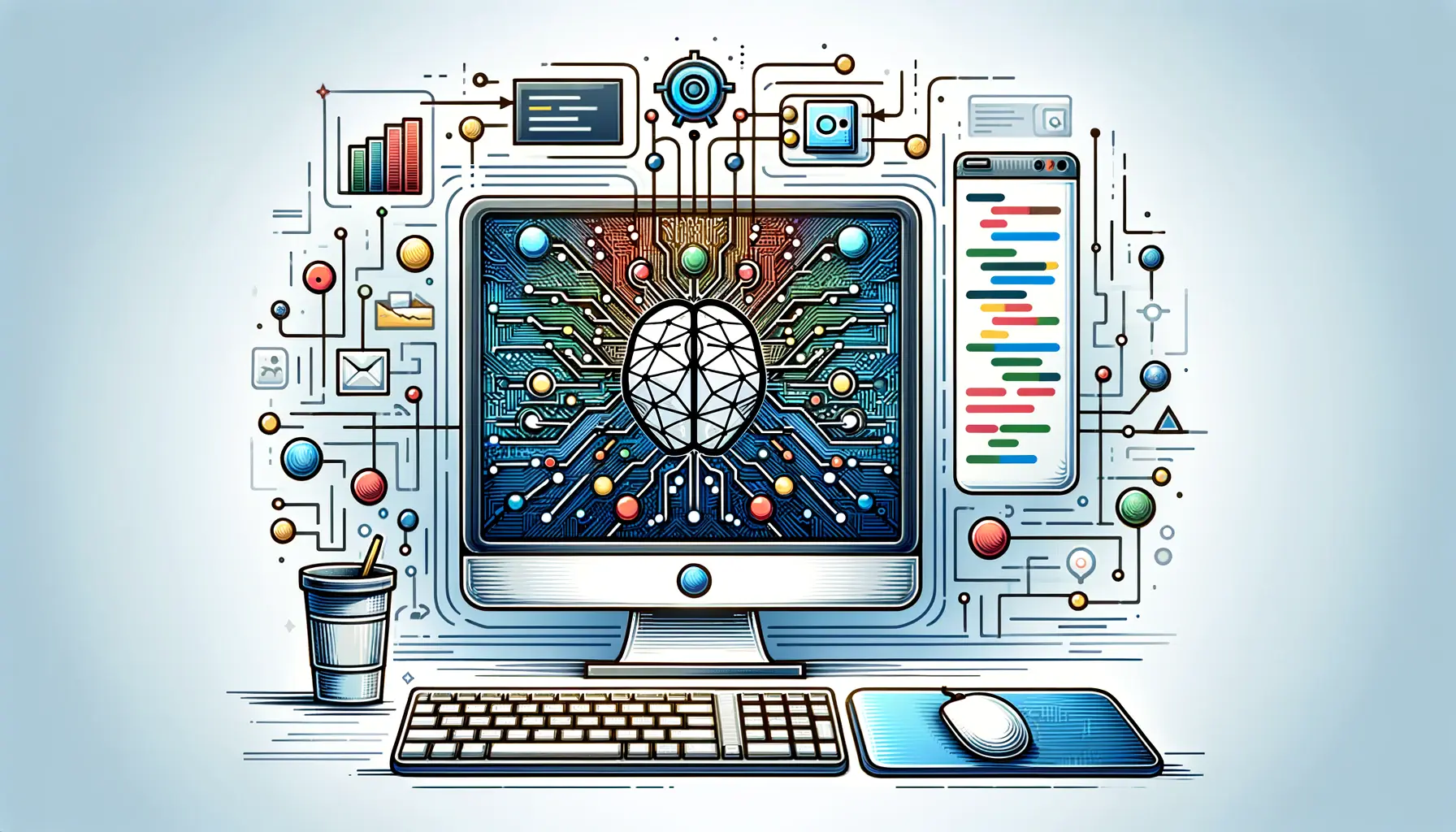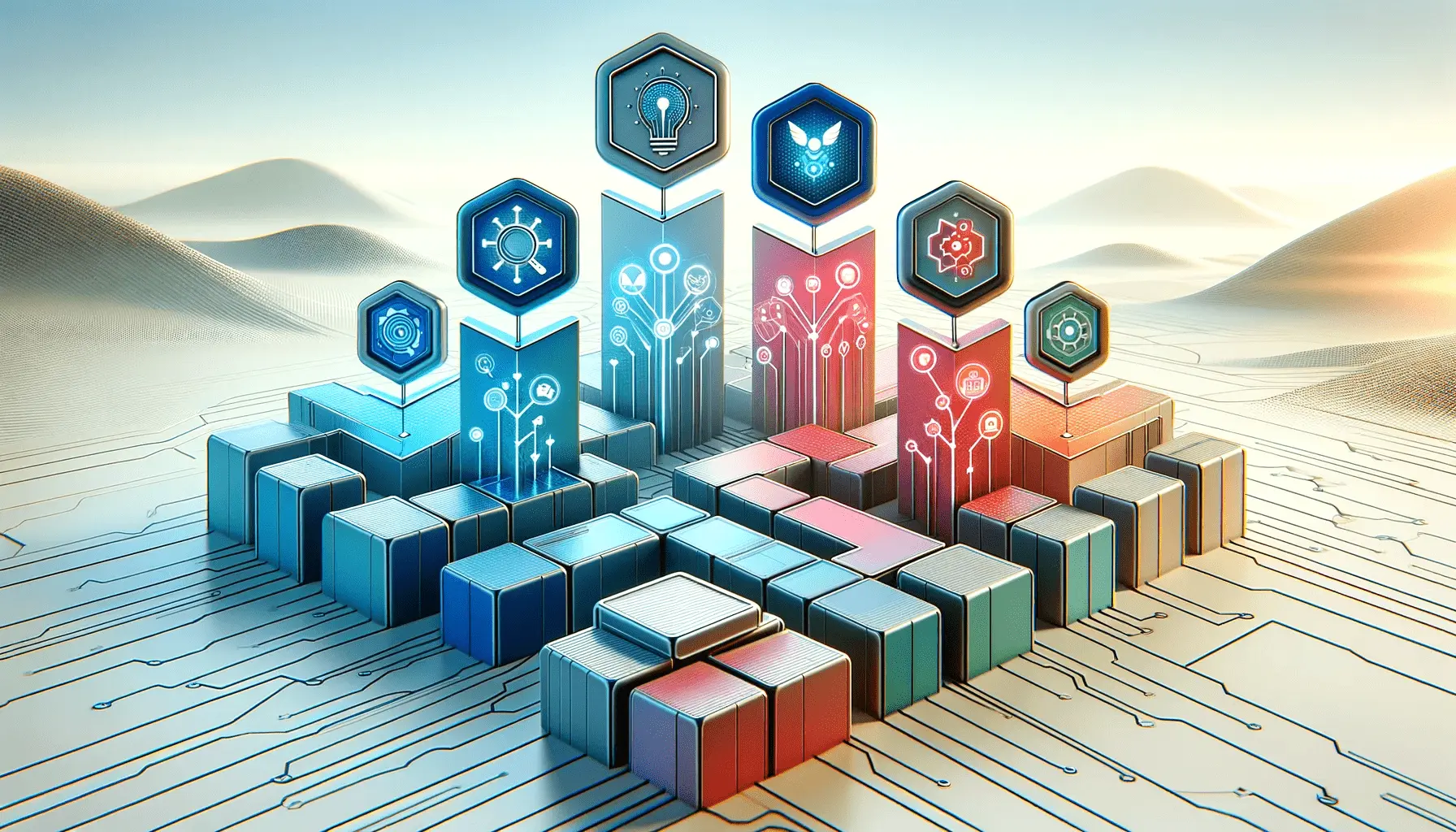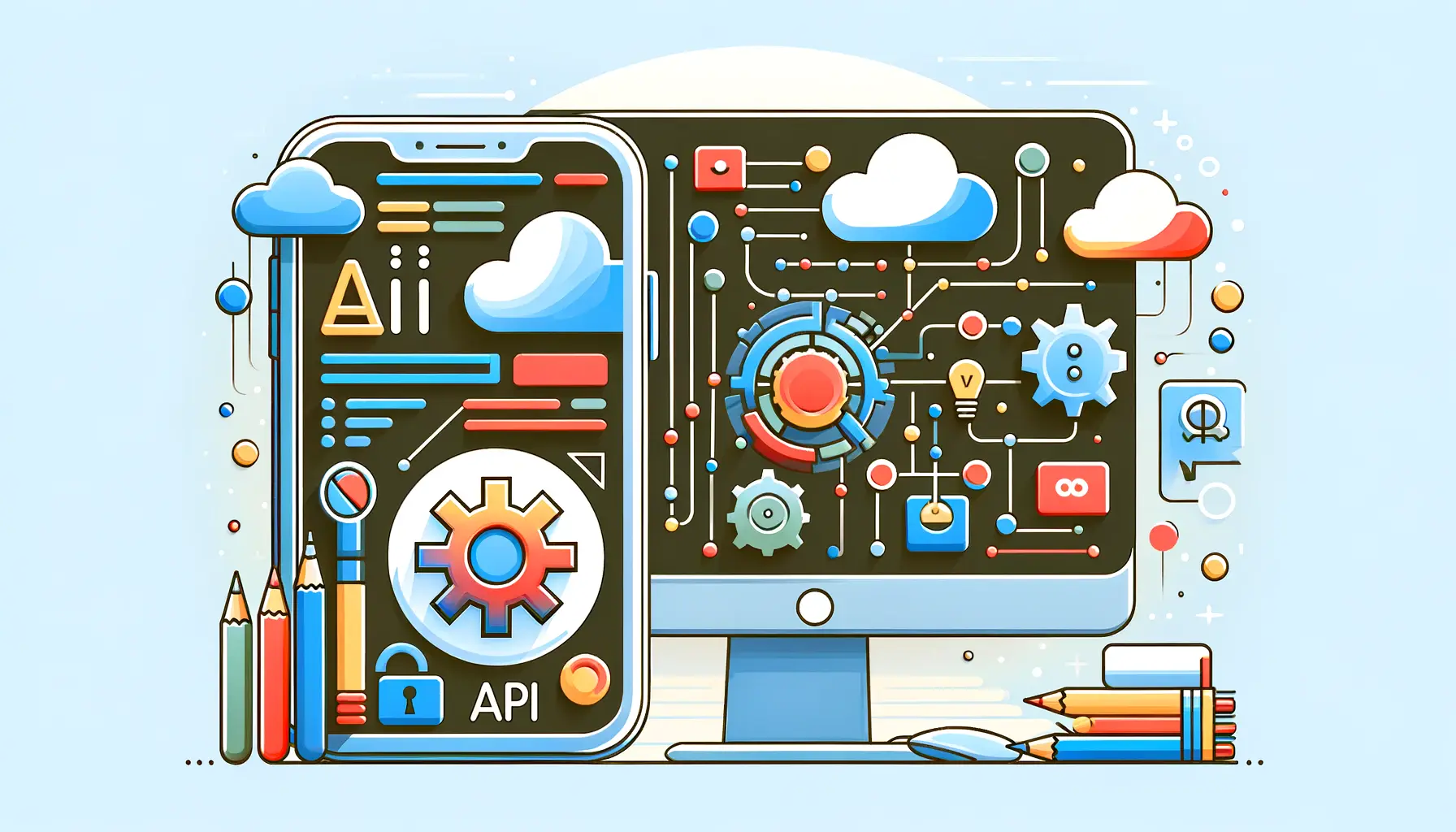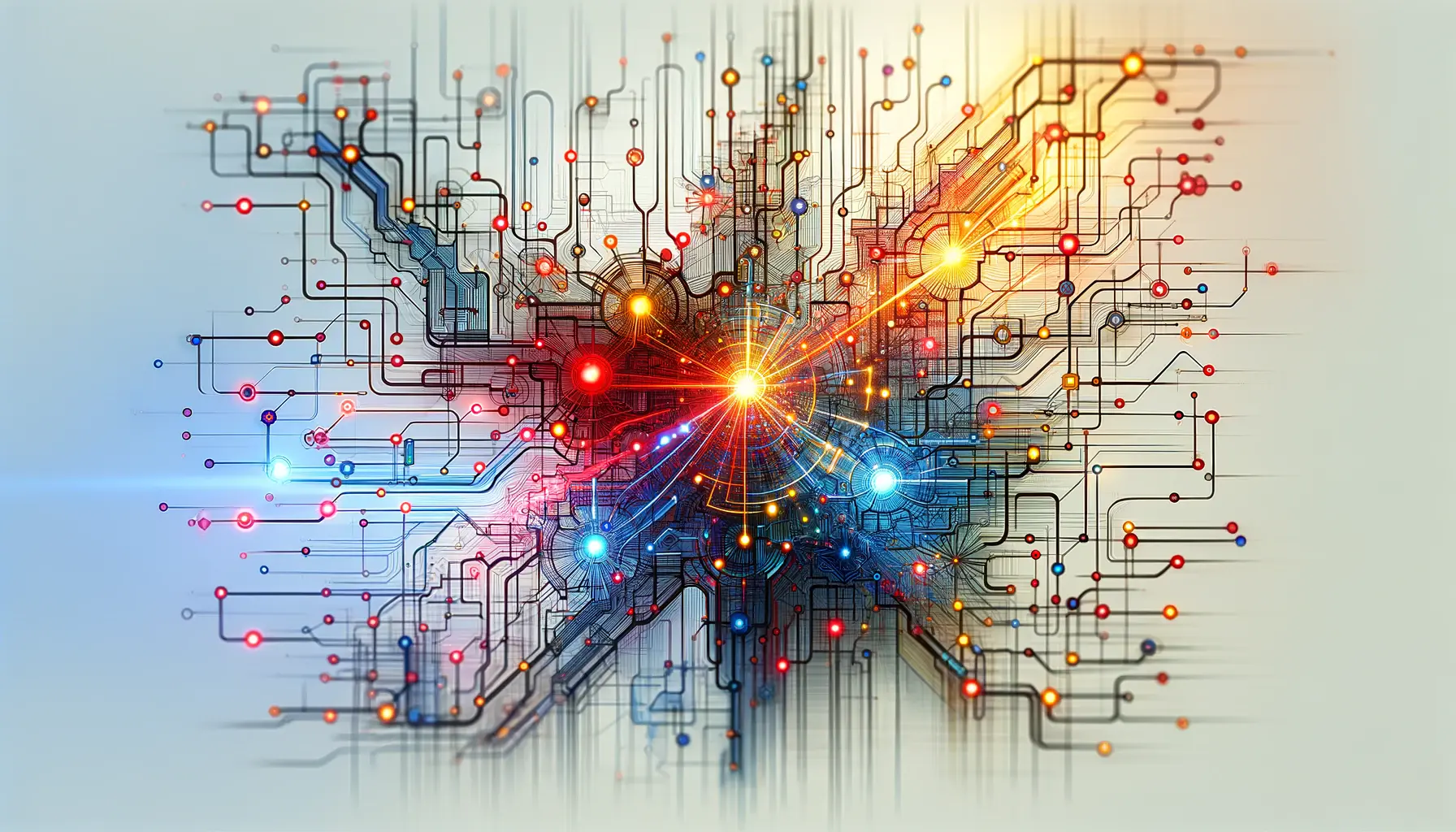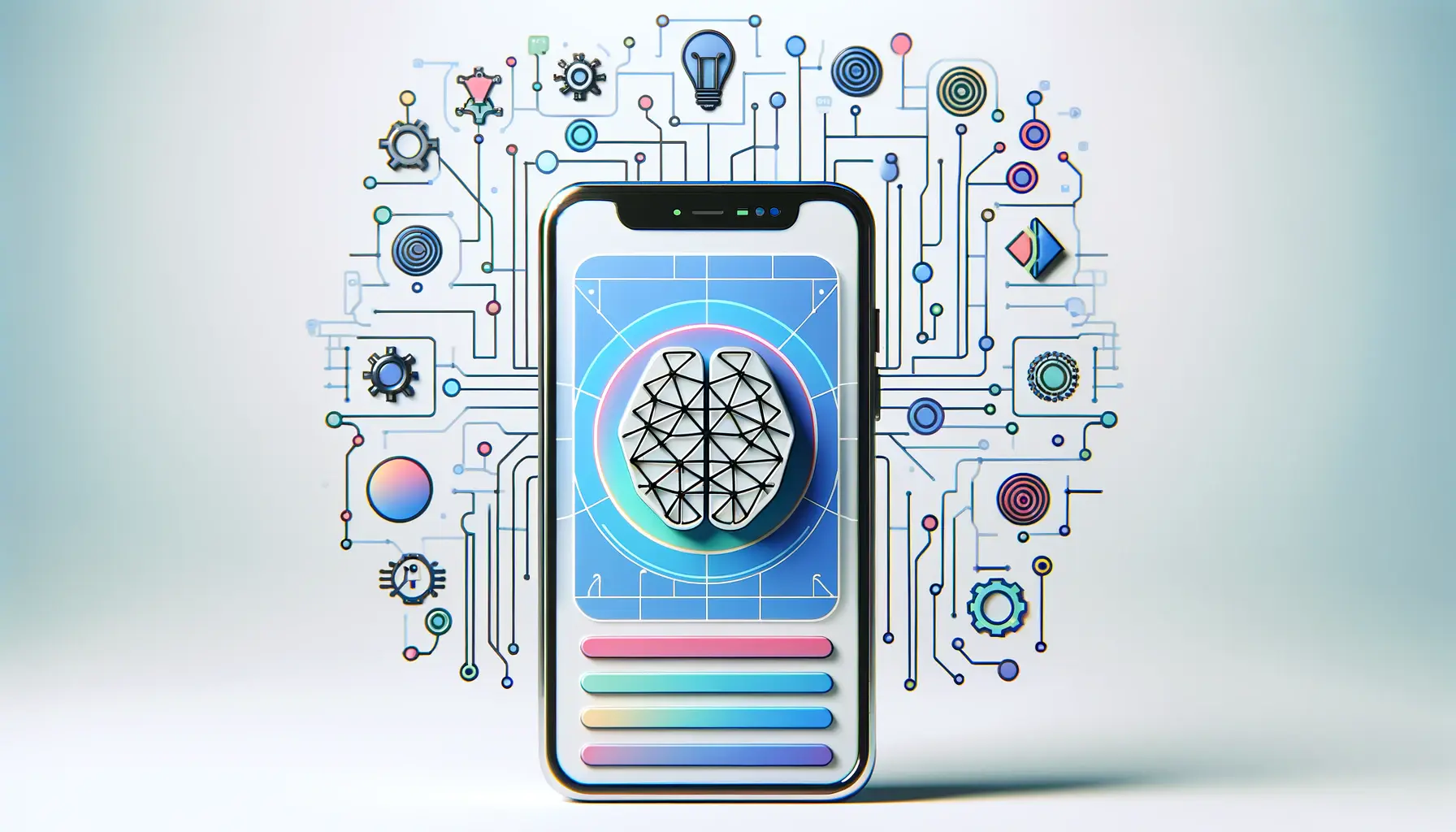With the rapidly evolving digital economy of today’s world, the application of state-of-the-art artificial intelligence (AI) in customer service is revolutionizing the way businesses interact with customers.
One of the most groundbreaking technologies in this area is OpenAI’s ChatGPT o1, a model that is designed to improve chatbots by employing advanced reasoning abilities.
With the help of ChatGPT o1, companies are able to create chatbots that not just reply to and respond to customer questions but also handle complex problems, providing a more personalized and efficient customer experience.
- Understanding ChatGPT o1 for Advanced Chatbot Development
- Setting Up Your Environment for ChatGPT o1 Integration
- Designing and Training Your Chatbot with ChatGPT o1
- Deploying and Maintaining Your ChatGPT o1-Based Chatbot
- Practical Uses of ChatGPT o1-Based Chatbots
- Unlocking the Potential of ChatGPT o1 for Next-Generation Chatbots
- Frequently Asked Questions Regarding ChatGPT o1
Understanding ChatGPT o1 for Advanced Chatbot Development
ChatGPT o1 represents a giant leap in AI technology, particularly with natural language comprehension and processing.
Unlike its predecessors, ChatGPT o1 is designed to ‘think’ before answering, making it possible to tackle complicated tasks with greater precision and depth.
This ability allows chatbots to handle sophisticated client queries, making interactions smoother and more effective.
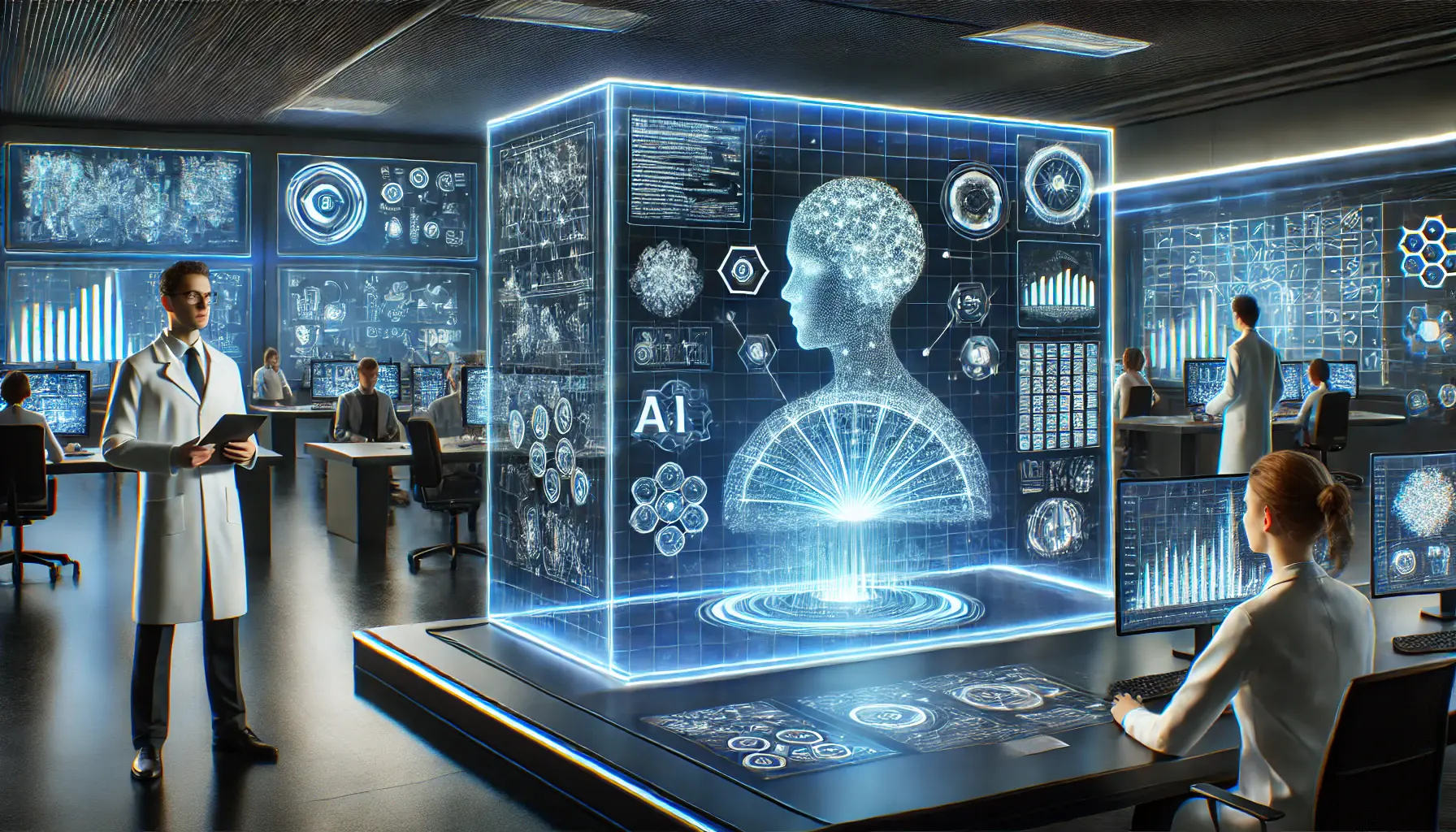
An advanced AI research lab where scientists develop and optimize ChatGPT o1’s capabilities.
Introduction to ChatGPT o1 and Its Capabilities
Created by OpenAI, ChatGPT o1 is part of a new series of AI models focused on enhanced reasoning.
By taking more time to deliberate before responding, ChatGPT o1 can break down complex problems into actionable steps and generate more precise and detailed answers.
This capability is particularly valuable in industries requiring in-depth explanations and problem-solving, such as technical support and financial services.
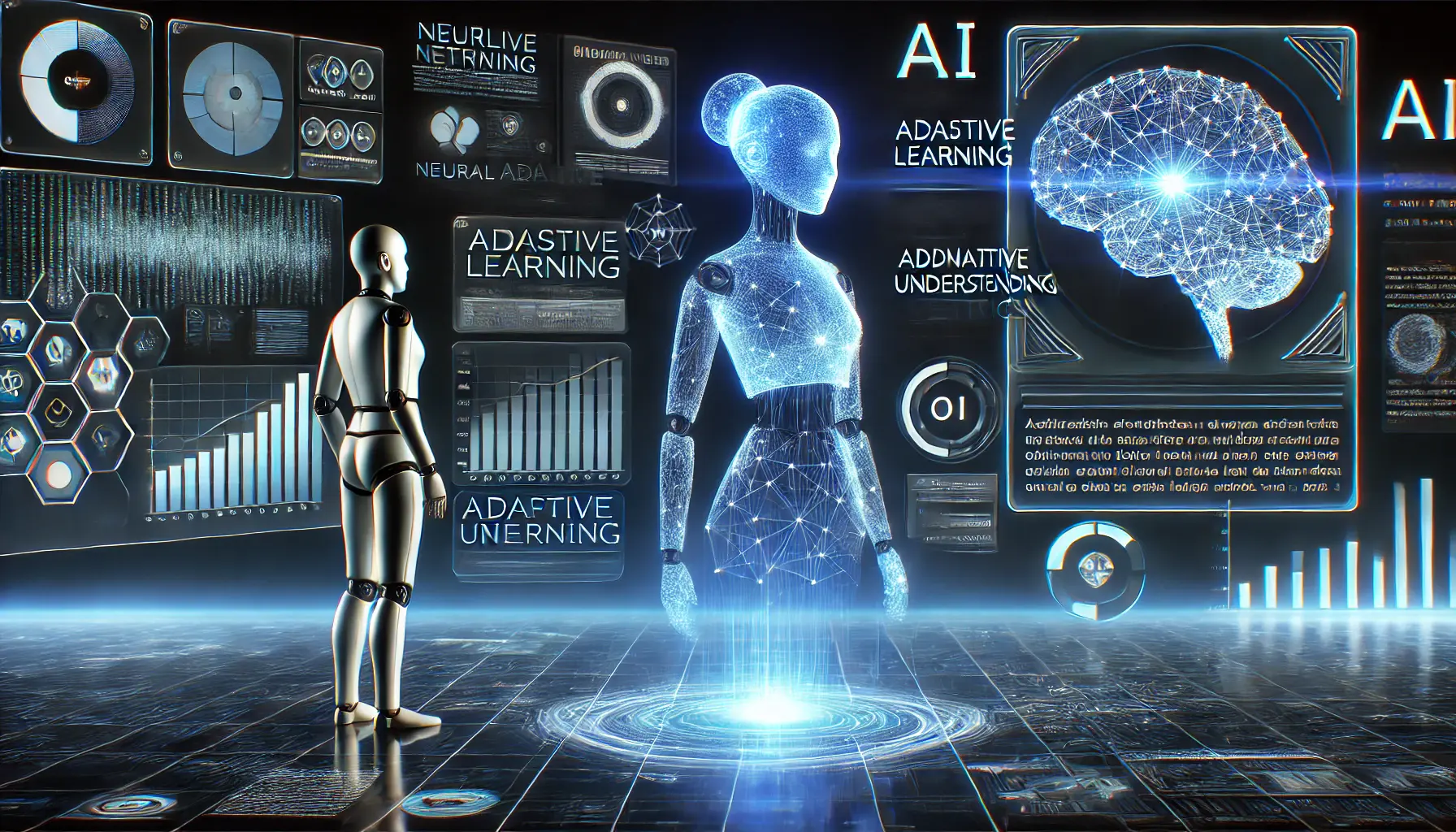
An AI-driven chatbot system utilizing advanced reasoning and adaptive learning for seamless interactions.
Key Features Enhancing Chatbot Intelligence
ChatGPT o1 introduces several capabilities that greatly improve chatbot performance:
- Advanced Reasoning: The model’s ability to handle and evaluate sophisticated information enables chatbots to provide solutions to complex problems.
- Enhanced Contextual Understanding: ChatGPT o1 maintains context in longer conversations, ensuring coherent and relevant responses throughout the interaction.
- Multimodal Input Processing: While primarily text-based, the model can be integrated into systems that process various input modalities, adding flexibility in customer interactions.
- Adaptive Learning: ChatGPT o1 can be trained with specific data, enabling chatbots to match a brand’s tone and customer service needs seamlessly.
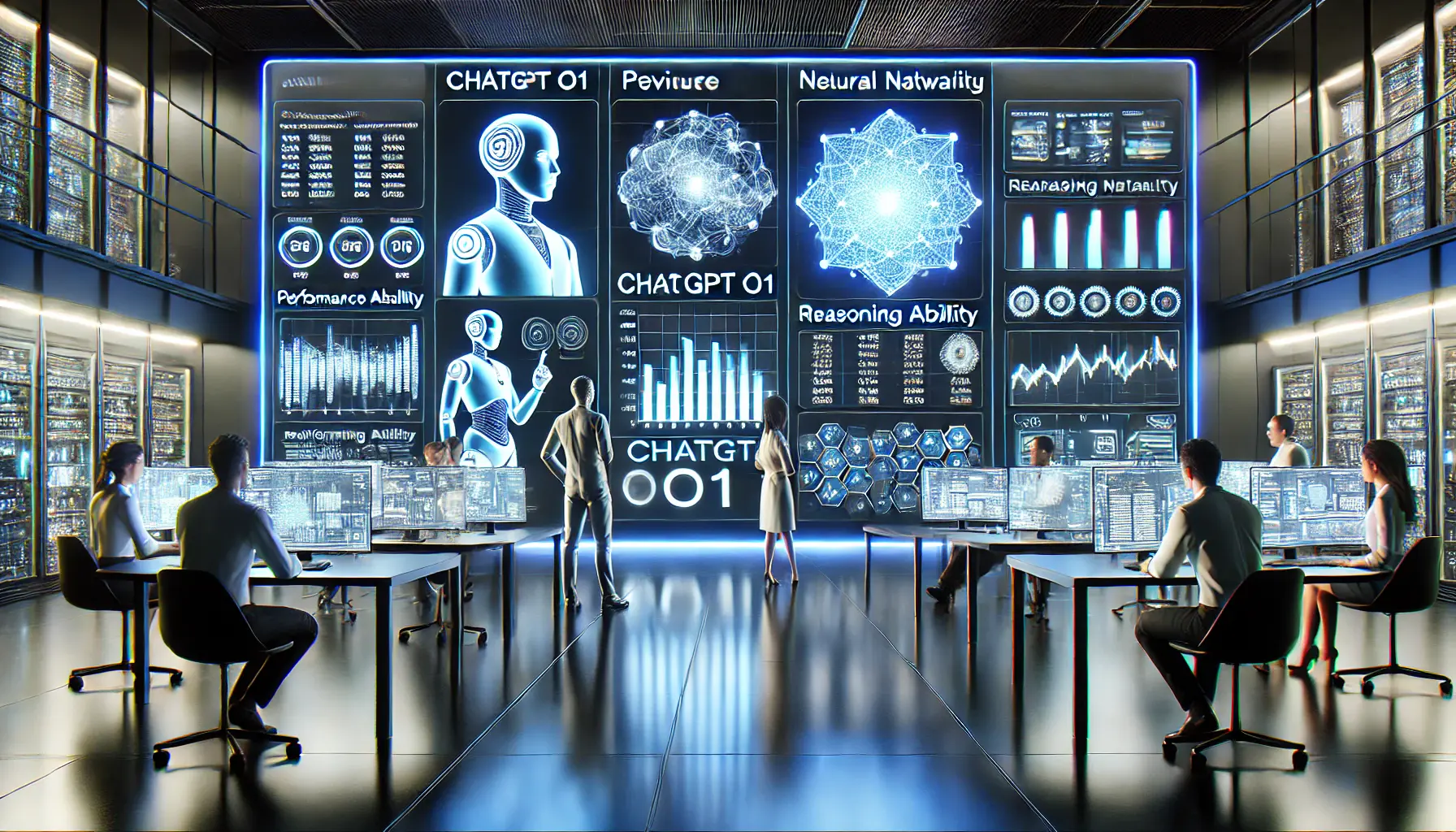
A side-by-side comparison of ChatGPT o1 and earlier AI models, highlighting advancements in reasoning and contextual understanding.
Comparing ChatGPT o1 to Previous Models
When compared to earlier versions like GPT-4o, ChatGPT o1 demonstrates remarkable improvements in several areas:
- Enhanced Problem-Solving: The ‘think-before-responding’ approach of ChatGPT o1 ensures higher accuracy and consistency in responses.
- Long-Term Context Handling: The model can maintain longer and more complex conversations without losing context, an issue observed in previous models.
- More Precision in Scientific Domains: ChatGPT o1 has achieved high-performance execution in fields such as mathematics, computer programming, and scientific exploration, making it an invaluable asset in technical industries.
By leveraging and adapting the advanced capabilities of ChatGPT o1, businesses can develop intelligent chatbots that not only respond to inquiries but also engage in meaningful problem-solving.
This leads to improved business efficiency and greater customer satisfaction.
ChatGPT o1 significantly enhances chatbot intelligence by improving contextual understanding and reasoning, leading to more human-like interactions.

A well-equipped developer workspace designed for seamless ChatGPT o1 integration and AI development.
Setting Up Your Environment for ChatGPT o1 Integration
In order to integrate ChatGPT o1 into your applications, you must have a pre-configured environment to ensure smooth operation and avoid compatibility issues.
This section will guide you through the system requirements, installation process, and development tool settings to seamlessly integrate ChatGPT o1 into your applications.
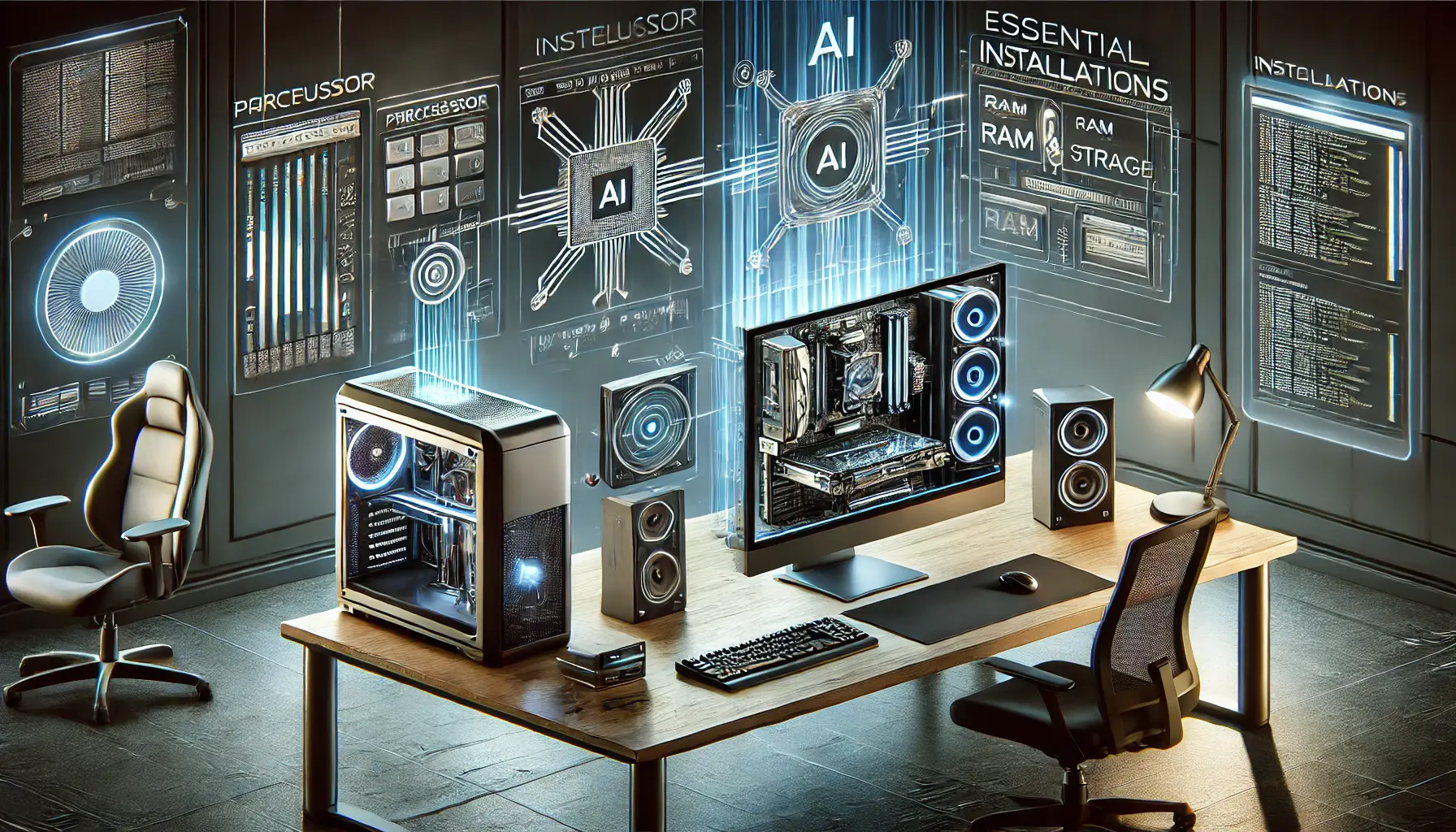
A workspace setup designed for installing and configuring AI models, featuring essential hardware and installation tools.
System Requirements and Installation Steps
Before integrating ChatGPT o1, ensure that your system meets the following requirements:
- Operating System: Compatible with macOS, Linux, or Windows (Preview).
- Processor: A modern 64-bit CPU (e.g., Intel i5/i7/i9, AMD Ryzen, Apple M1/M2).
- Memory: At least 8 GB of RAM (16 GB or more recommended for better performance).
- Storage: At least 10 GB of free disk space (SSD recommended for faster performance).
- Internet Connection: A stable, high-speed connection for real-time API interactions.
Once your system meets these specifications, follow these installation steps:
- Install Python: Install Python 3.6 or later on your system.
- Set Up a Virtual Environment: Install a virtual environment to manage dependencies.
- Install Required Libraries: Use pip to install necessary packages, such as the OpenAI SDK.
- Get API Credentials: Sign up for an OpenAI account and generate your API keys.
- Test the Installation: Run a simple script to verify that ChatGPT o1 is working correctly.

A high-performance developer workspace featuring multiple screens for coding, AI development, and performance monitoring.
Configuring Development Tools for Best Performance
For the best development experience with ChatGPT o1, consider the following configurations:
- Integrated Development Environment (IDE): Use an IDE that supports Python and provides syntax highlighting and debugging features.
- API Integration: Incorporate the OpenAI API into your development workflow, following best practices for handling API keys and rate limits.
- Version Control: Utilize version control tools like Git to track changes and collaborate efficiently.
- Logging and Monitoring: Enable logging to monitor API calls and responses for debugging and optimization.
By properly configuring your environment and development tools, you can seamlessly integrate ChatGPT o1 into your applications, leveraging its advanced features to enhance user interaction and problem-solving efficiency.
Before starting the integration, ensure your system meets the necessary hardware and software requirements to avoid compatibility issues.
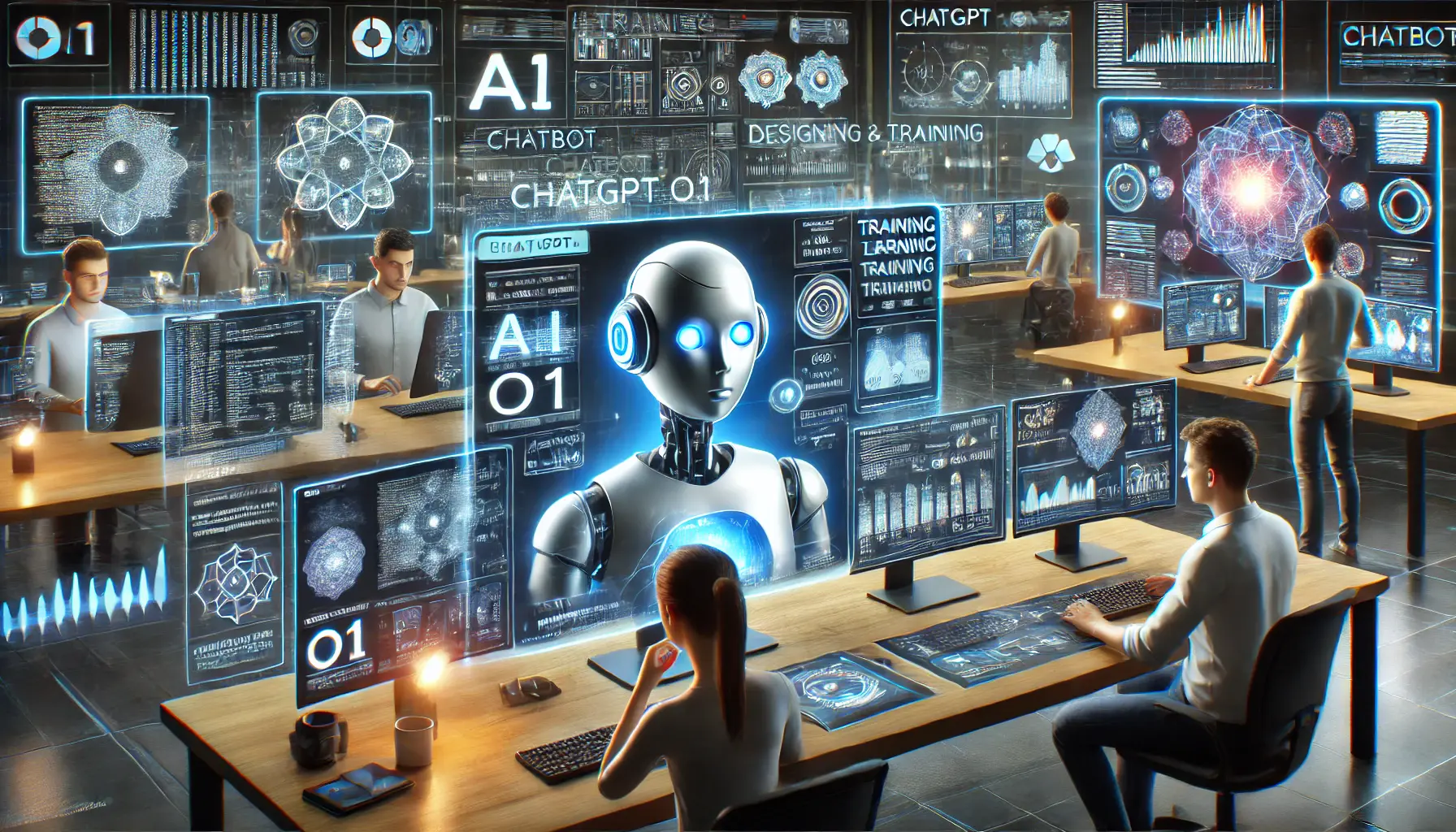
A cutting-edge AI training environment where developers design and train a chatbot using ChatGPT o1.
Designing and Training Your Chatbot with ChatGPT o1
Efficient chatbot design and rigorous training are necessary to develop an effective chatbot with ChatGPT o1.
This section describes best practices for designing a chatbot, training methods for ChatGPT o1 for target applications, and reinforcement learning for enhancing response quality.

A team of developers collaborating on best practices for designing a user-centered chatbot.
Best Practices for Chatbot Design
To design a chatbot, follow a user-centric approach to facilitate efficient and effective conversations.
Implement the following principles:
- Transparency: Overtly inform users that they are interacting with a chatbot to set the correct expectations.
- Simplicity: Provide straightforward, quick, and concise responses to user queries.
- Goal Orientation: Set specific objectives for your chatbot, such as booking appointments or answering FAQs, and design it with these objectives in mind.
- Context Awareness: Ensure the chatbot can comprehend and maintain context to provide logical and relevant responses throughout the conversation.
- Accessibility: Make the chatbot inclusive by adhering to accessibility standards, ensuring usability for all users.
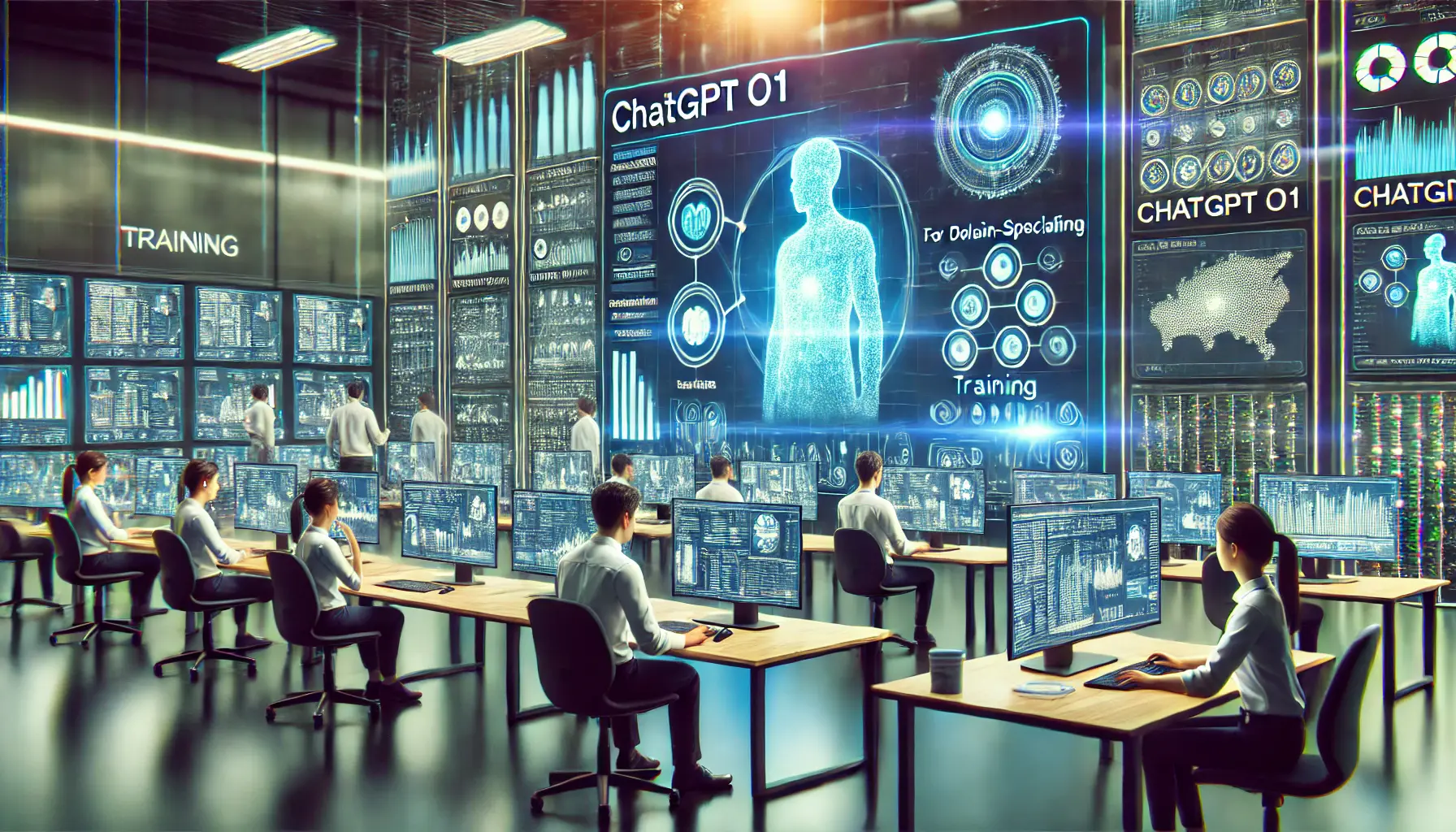
AI specialists training ChatGPT o1 with domain-specific data for applications in fields like healthcare, finance, and technical industries.
Training ChatGPT o1 for Domain-Specific Applications
In order to make the chatbot work better in specific domains, it is important to train ChatGPT o1 with relevant data:
- Data Collection: Gather rich datasets pertinent to your domain to provide the model with sufficient context and industry-specific knowledge.
- Fine-Tuning: Train the pre-trained ChatGPT o1 model with your domain-specific data to shape its responses in industry-related terminology and insights.
- Continuous Learning: Regularly update the model with new data to keep it up-to-date with current trends and maintain its accuracy.
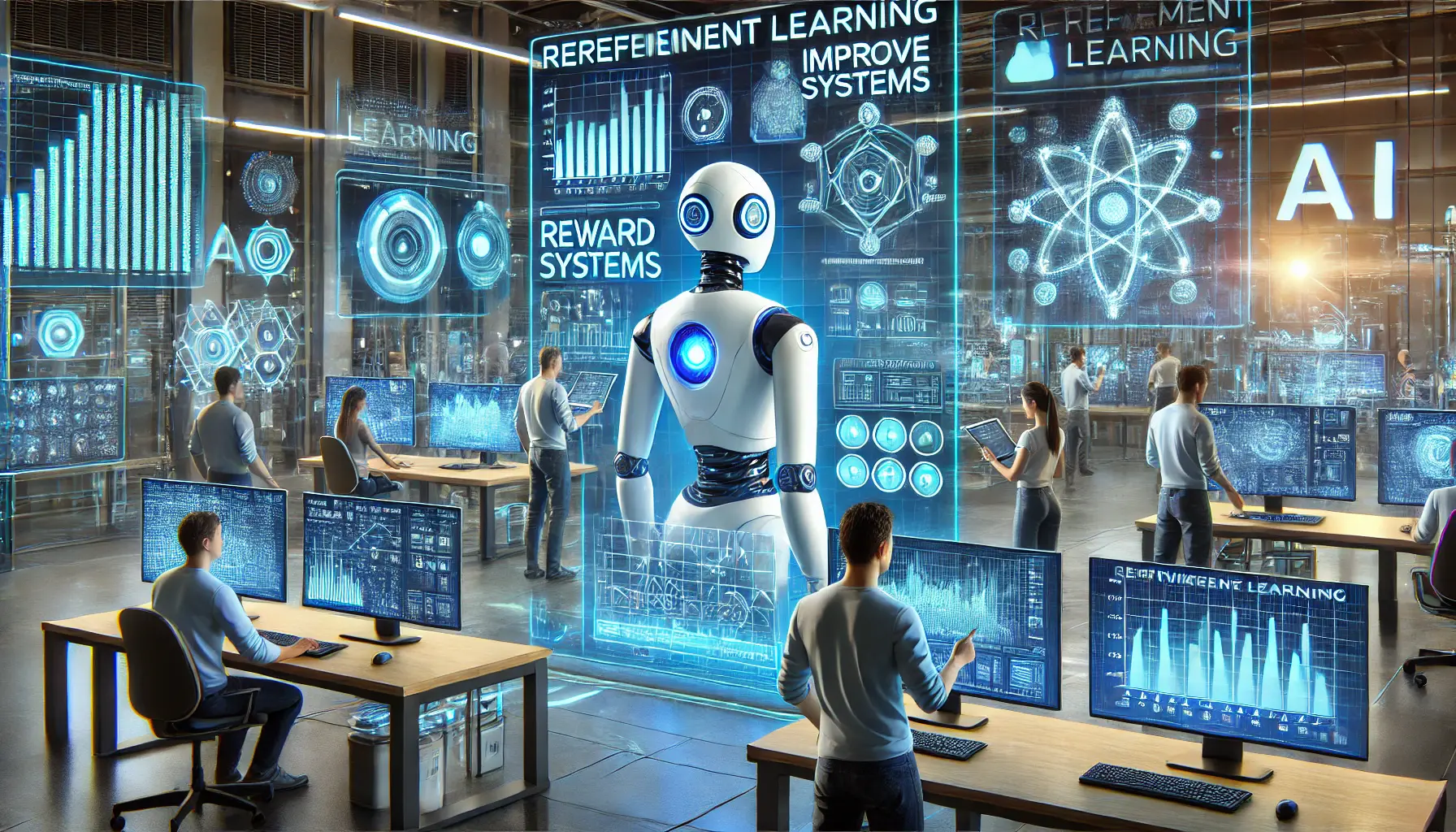
AI engineers applying reinforcement learning techniques to improve chatbot responses, enhancing performance through real-time feedback and reward systems.
Applying Reinforcement Learning to Improve Responses
Reinforcement learning (RL) has the potential to significantly enhance the quality of your chatbot conversations:
- Feedback Loops: Establish a feedback system that allows users to rate chatbot responses, using this data to refine and improve future interactions.
- Reward Systems: Implement a reward-based training system that reinforces desirable chatbot behavior by prioritizing accurate and helpful responses.
- Simulation Training: Use simulated conversations to expose the chatbot to various scenarios, enabling it to learn and adapt to different user inputs effectively.
By implementing these design principles and training strategies, you can develop a ChatGPT o1-powered chatbot that delivers customized, contextually relevant, and productive interactions, ultimately enhancing user satisfaction and engagement.
Customizing ChatGPT o1 with domain-specific training data allows for a more relevant and accurate chatbot experience, enhancing user satisfaction.
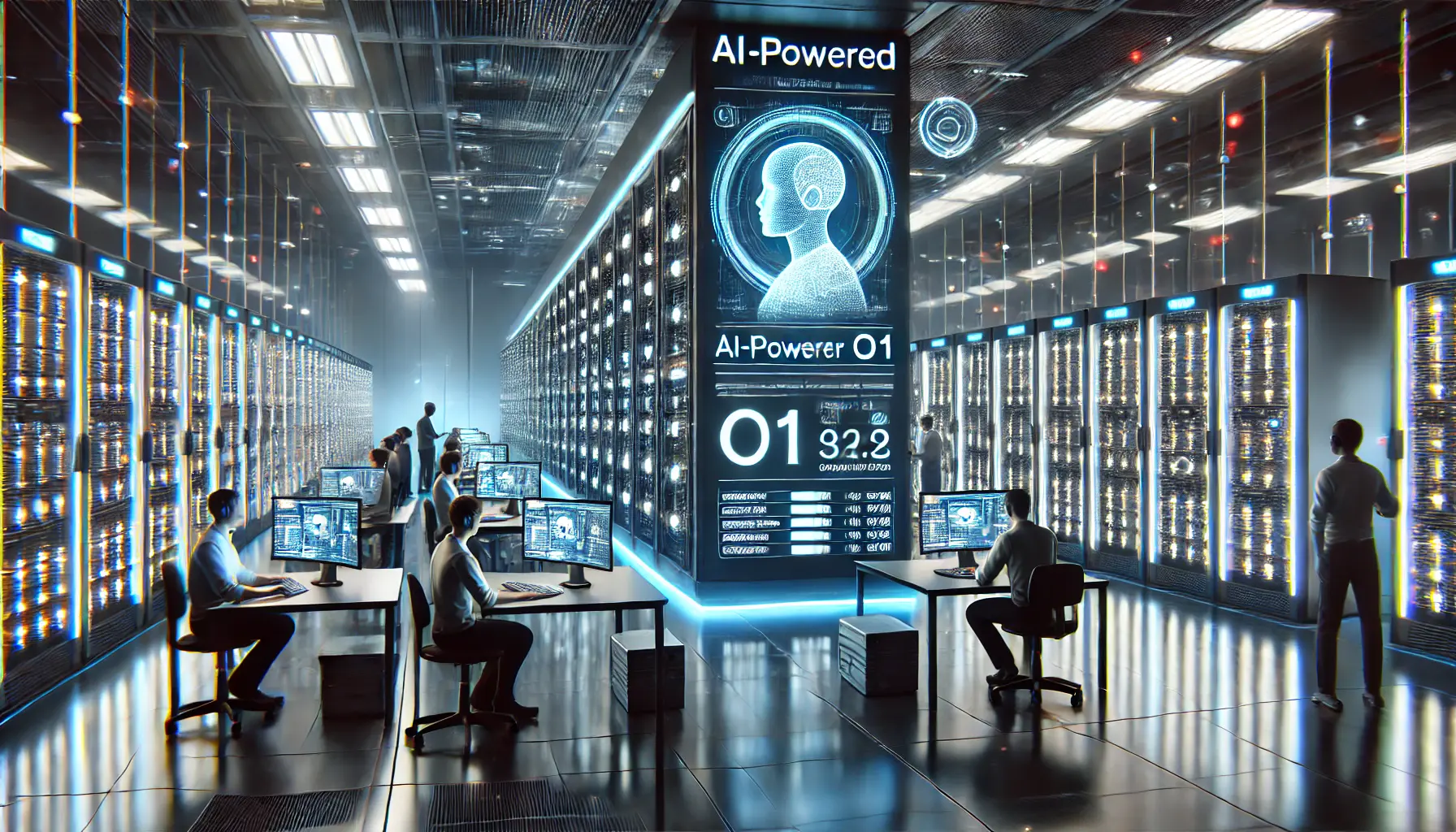
AI-powered ChatGPT o1 chatbots deployed in a high-tech server room, with technicians monitoring performance and maintaining system health.
Deploying and Maintaining Your ChatGPT o1-Based Chatbot
After designing and training your chatbot with ChatGPT o1, the next immediate steps are deployment and regular maintenance.
Successful deployment ensures that your chatbot performs optimally across various platforms, while ongoing maintenance keeps it operating at peak performance and maximum security.
Here are some essential tips on effective deployment and best maintenance practices for your ChatGPT o1-based chatbot.

AI-powered ChatGPT o1 chatbots being deployed across multiple platforms, optimized through a cloud-based infrastructure.
Deployment Practices for ChatGPT o1 Chatbots
Deploying your chatbot should be strategically planned to ensure smooth integration and accessibility for users.
Consider the following strategies:
- Platform Selection: Choose platforms that best suit your target audience, such as websites, mobile apps, or social media platforms.
- Scalable Infrastructure: Leverage cloud services to handle fluctuating user loads, ensuring your chatbot remains responsive even during peak traffic periods.
- API Integration: Establish solid API integrations between your chatbot and other systems to facilitate seamless data exchange and functionality.
- Security Measures: Protect user data by implementing encryption protocols and adhering to privacy regulations.
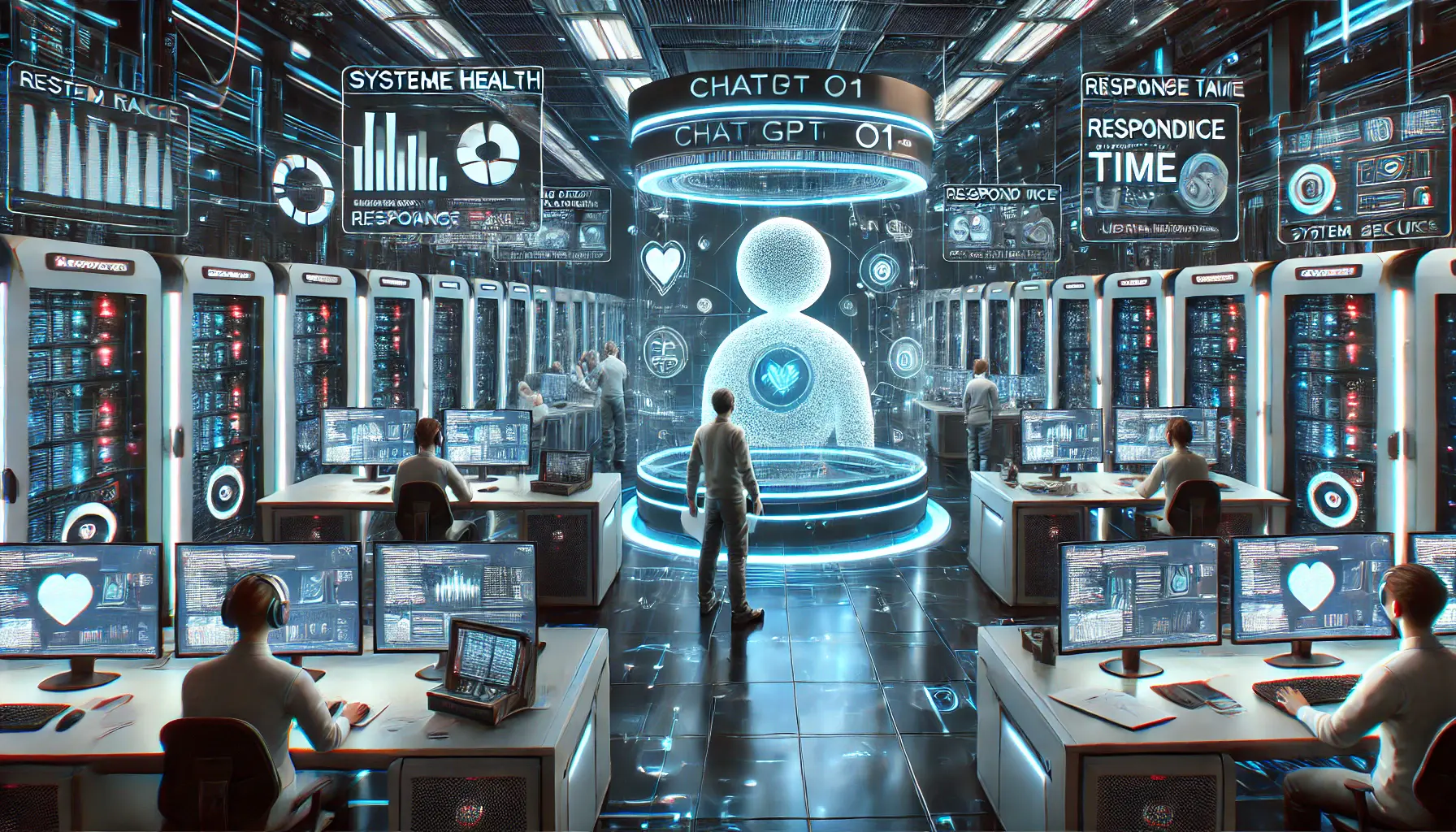
Engineers performing routine maintenance and monitoring key metrics to ensure optimal performance of ChatGPT o1 chatbots.
Best Practices for Chatbot Maintenance
Maintaining your ChatGPT o1-based chatbot requires constant monitoring and updates.
Follow these best practices:
- Regular Updates: Refresh your chatbot’s knowledge base frequently to provide accurate and relevant responses.
- Performance Monitoring: Track key performance metrics such as response time and user engagement to identify areas for improvement.
- User Feedback Integration: Collect and analyze user feedback to refine chatbot conversations and address any issues in a timely manner.
- Security Audits: Conduct periodic security audits to detect and mitigate potential vulnerabilities.
By implementing these deployment strategies and maintenance routines, you can ensure that your ChatGPT o1-based chatbot delivers a stable, efficient, and secure user experience.
Regular maintenance, security updates, and performance monitoring are critical to ensuring your chatbot operates efficiently and securely.
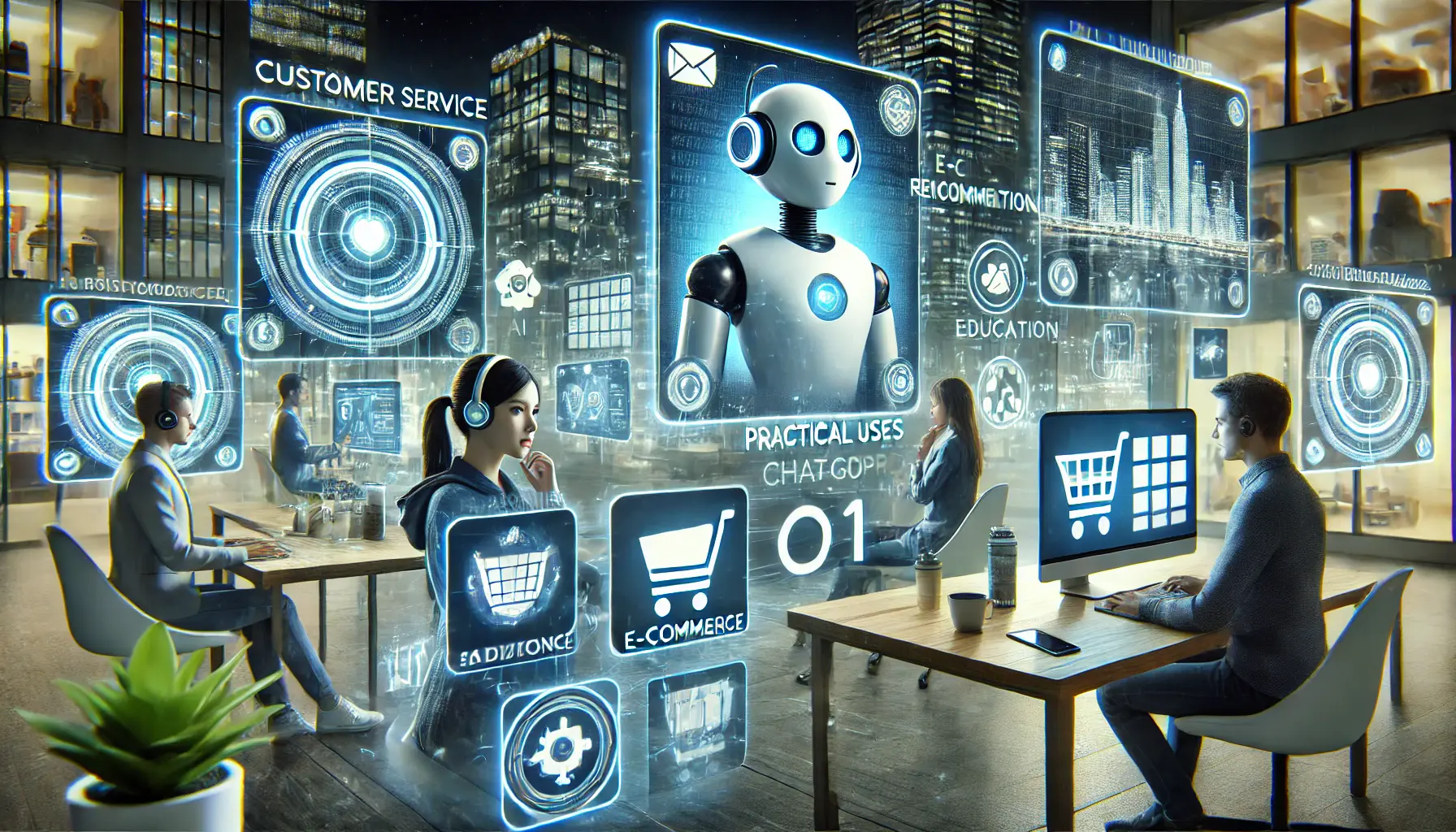
ChatGPT o1-based chatbots being used in customer service, e-commerce, and education to assist users with real-time interactions and personalized experiences.
Practical Uses of ChatGPT o1-Based Chatbots
The adoption of ChatGPT o1 in chatbots has revolutionized numerous industries by improving customer interaction and enhancing operational efficiency.
This section explores the real-world applications of ChatGPT o1-based chatbots in customer service, e-commerce, and education.
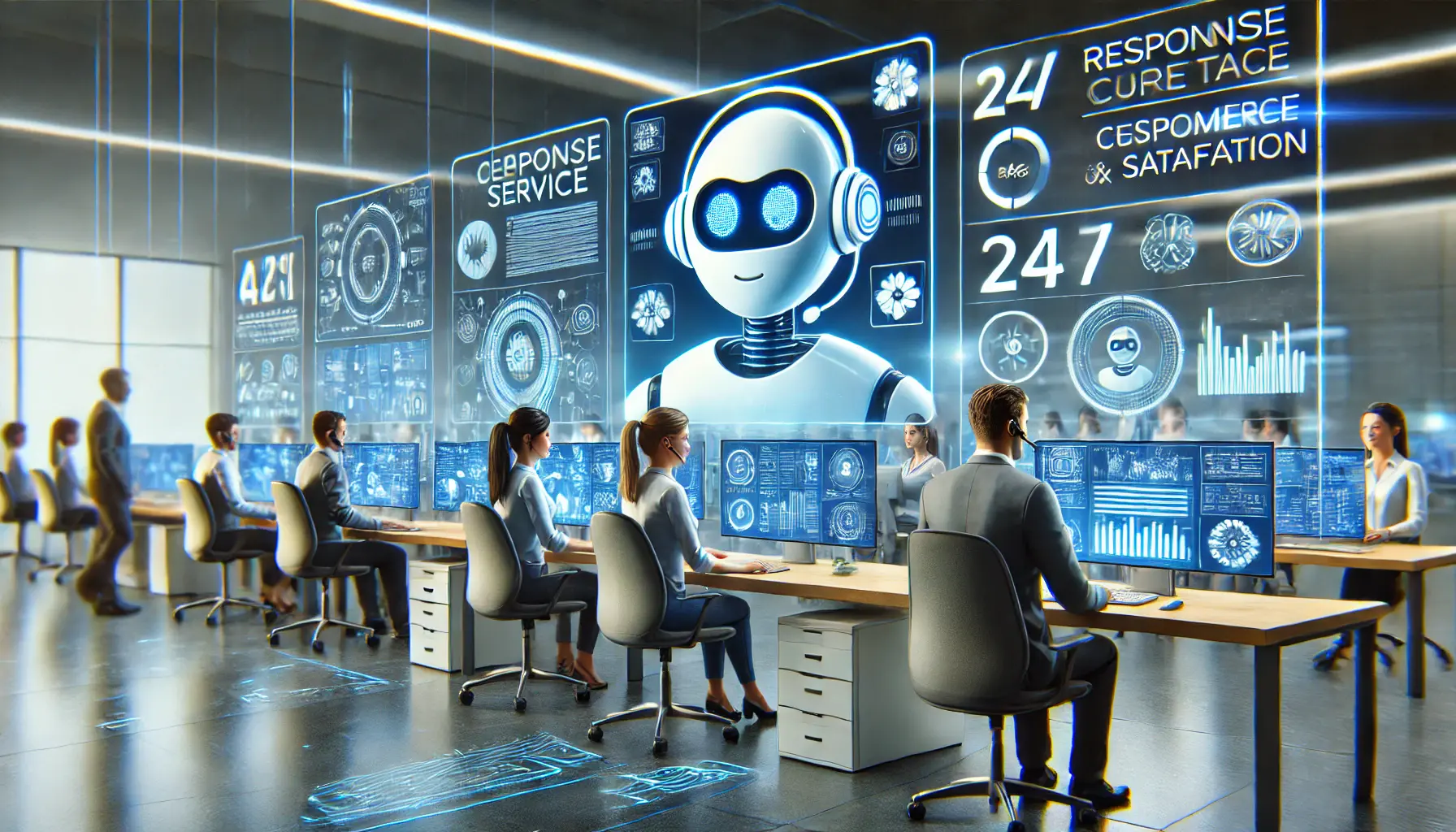
ChatGPT o1 chatbots providing 24/7 support alongside customer service agents in a modern customer service center.
Utilization of ChatGPT o1 for Enhanced Customer Care
ChatGPT o1-based chatbots offer several advantages in customer service:
- 24/7 Support: Offering around-the-clock assistance, these chatbots handle inquiries even outside of business hours, boosting customer satisfaction.
- Optimized Query Resolution: Equipped with advanced reasoning capabilities, they resolve complex customer issues promptly, reducing wait times and improving service quality.
- Personalized Interaction: By analyzing user data, chatbots provide responses tailored to each individual, delivering an interactive and more personalized experience.
For example, businesses have implemented ChatGPT o1 chatbots for customer care without requiring extensive training, achieving high success rates in managing customer interactions.
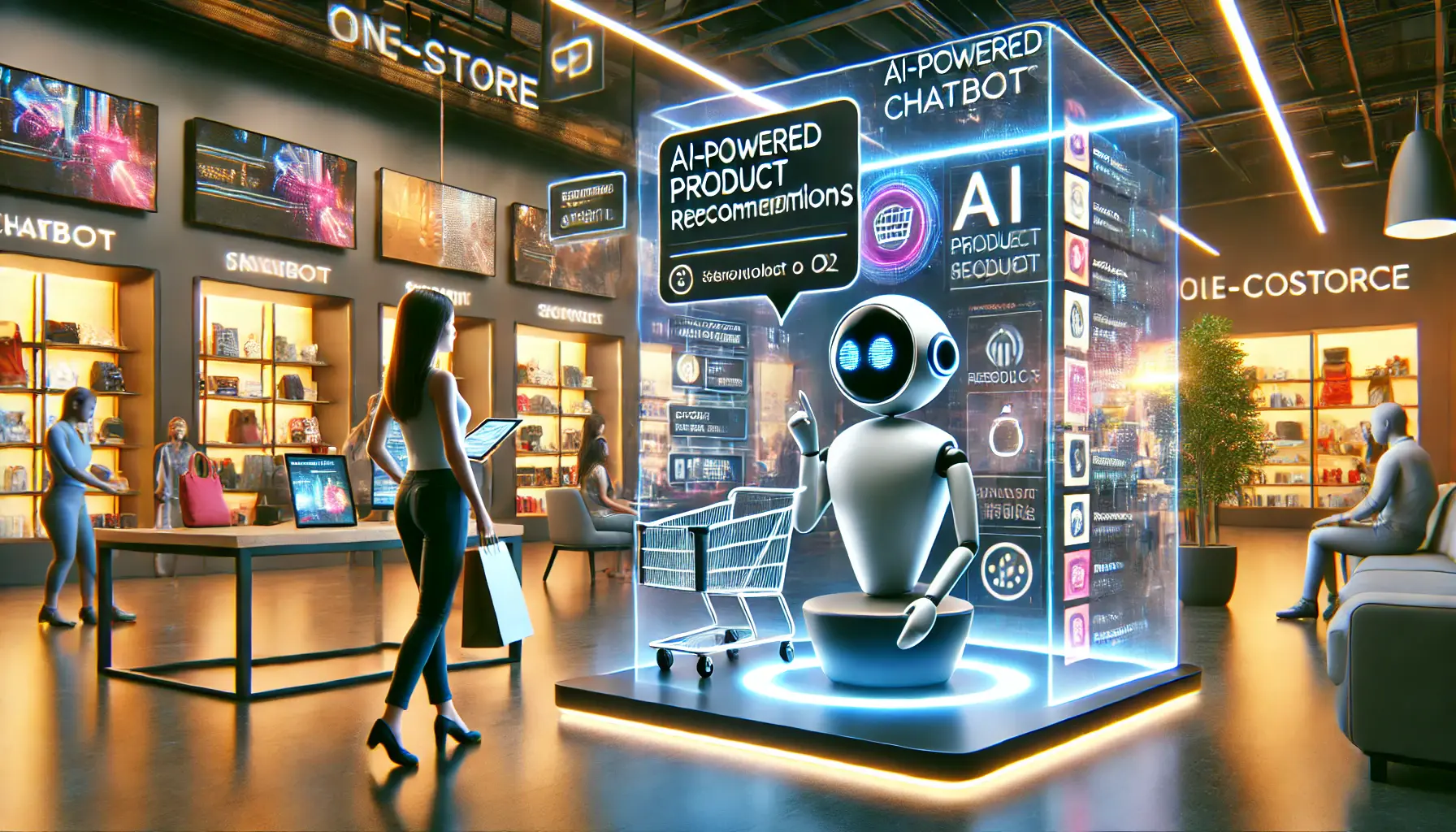
ChatGPT o1 transforming e-commerce with personalized shopping experiences and tailored product recommendations.
Transforming E-Commerce Using ChatGPT o1
In e-commerce, ChatGPT o1-based chatbots contribute to:
- Personalized Shopping Assistance: Providing product recommendations based on user history and preferences to enhance the shopping experience.
- Order Management: Assisting customers with order tracking, returns, and exchanges, streamlining post-purchase support.
- Reducing Cart Abandonment: Engaging customers during the checkout process to address concerns and encourage purchase completion.
Many online stores have integrated AI-powered chatbots to help customers with holiday shopping by offering personalized product suggestions and improving overall customer support.
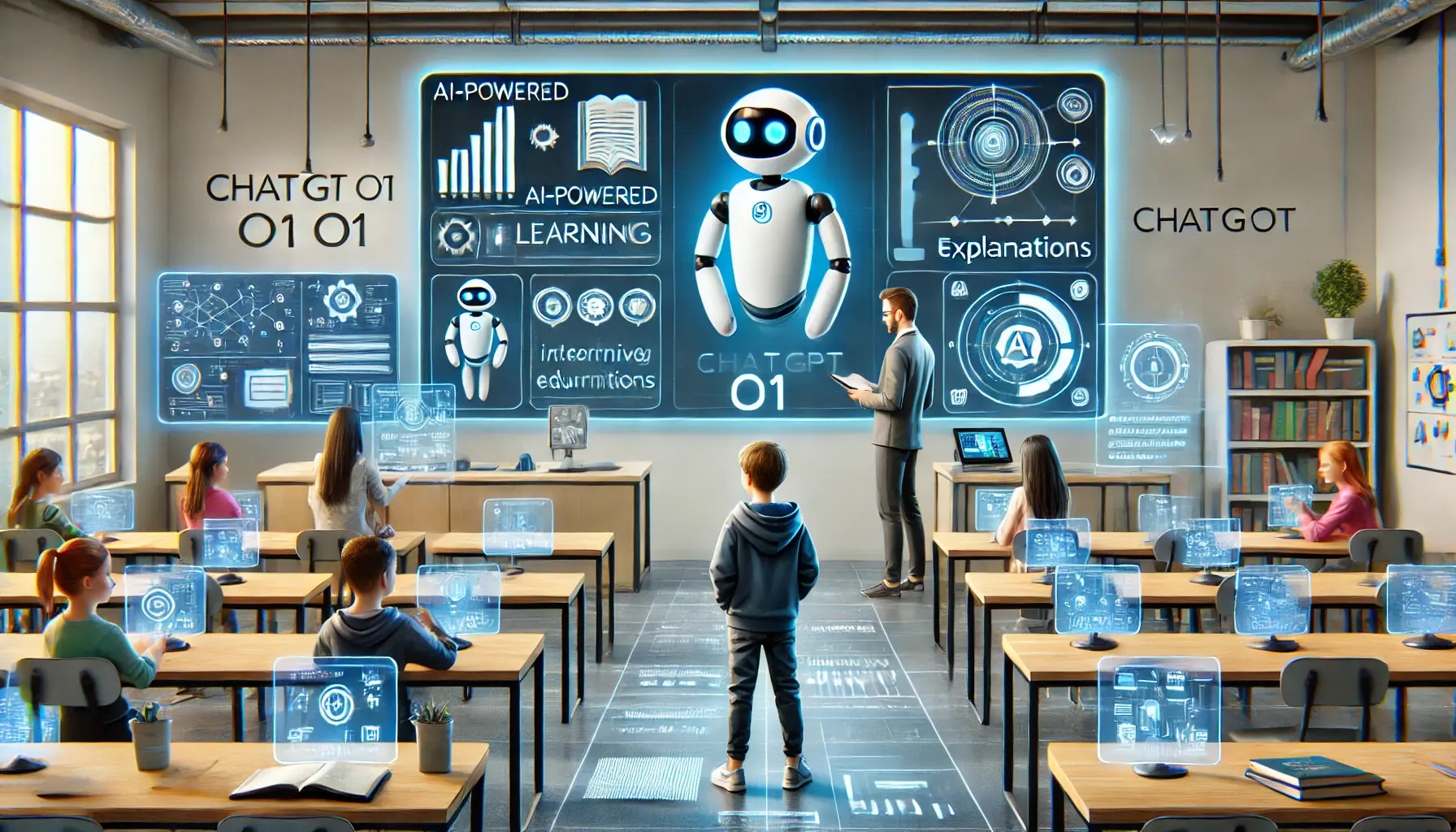
ChatGPT o1 enhancing education through personalized tutoring and interactive learning tools.
Improving Education with ChatGPT o1
Educational institutions are leveraging ChatGPT o1-powered chatbots in various ways:
- Offering Personalized Tutoring: Providing explanations and answering questions to support student learning outside the classroom.
- Assisting in Language Learning: Engaging users in dialogue practice to enhance language acquisition.
- Enabling Administrative Work: Handling frequently asked questions about course details, schedules, and campus resources, reducing administrative workload.
For instance, language learning applications have integrated ChatGPT o1 to explain mistakes and facilitate conversation practice, offering users a more interactive and personalized learning experience.
By incorporating ChatGPT o1 chatbots, industries such as customer service, e-commerce, and education can significantly enhance user engagement, automate processes, and provide personalized experiences.
ChatGPT o1-powered chatbots are transforming industries such as customer service, e-commerce, and education by automating tasks and providing intelligent interactions.
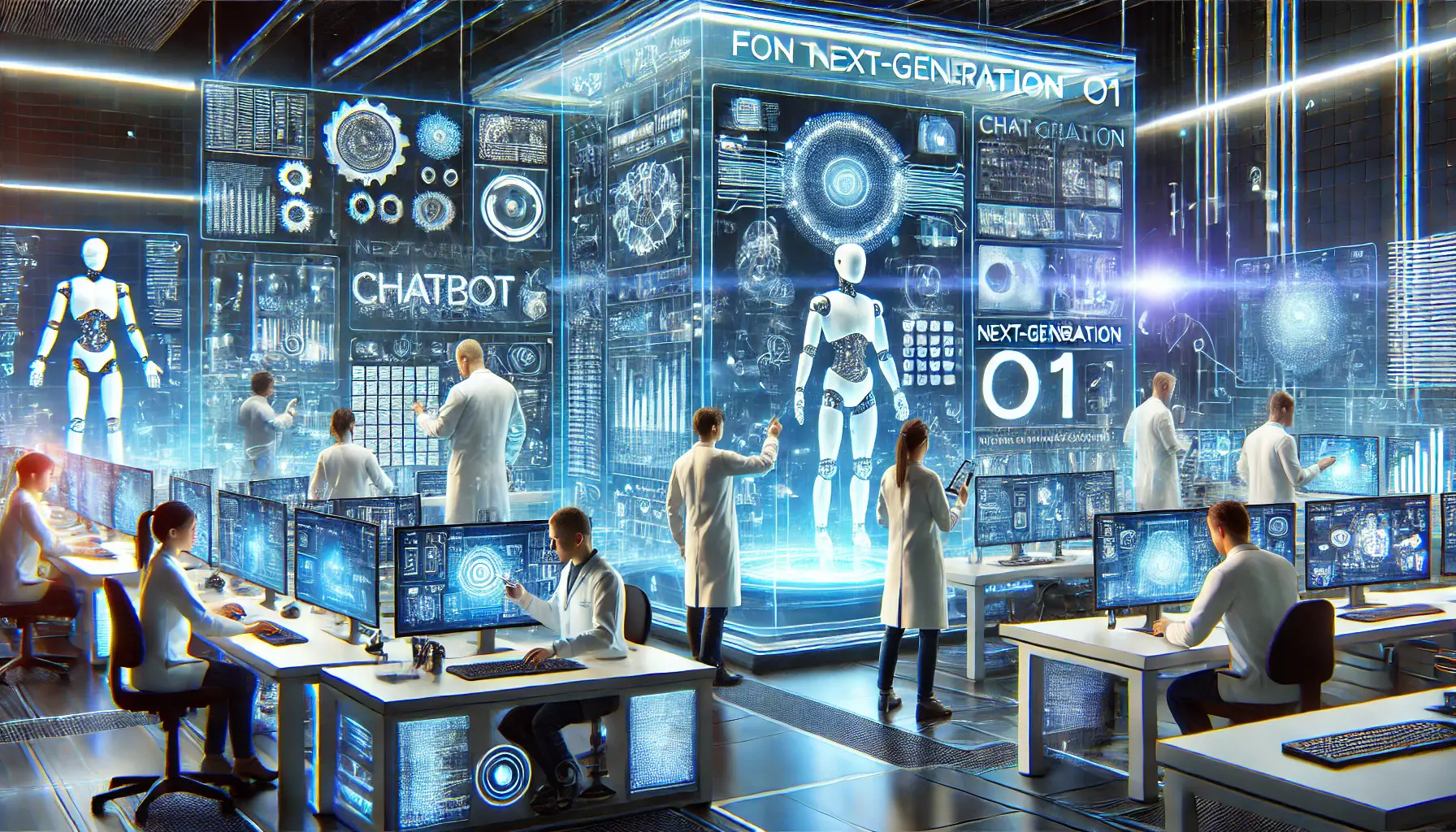
Engineers in a high-tech lab optimizing ChatGPT o1 for next-generation chatbot capabilities and AI-powered interactions.
Unlocking the Potential of ChatGPT o1 for Next-Generation Chatbots
The integration of ChatGPT o1 into chatbot technology has revolutionized the way businesses and organizations interact with users.
By leveraging its improved reasoning capabilities, superior contextual understanding, and domain-specific relevance, ChatGPT o1-powered chatbots have redefined AI-driven interactions.
From customer service and e-commerce to education, these intelligent chatbots are making conversations more efficient, engaging, and personalized.
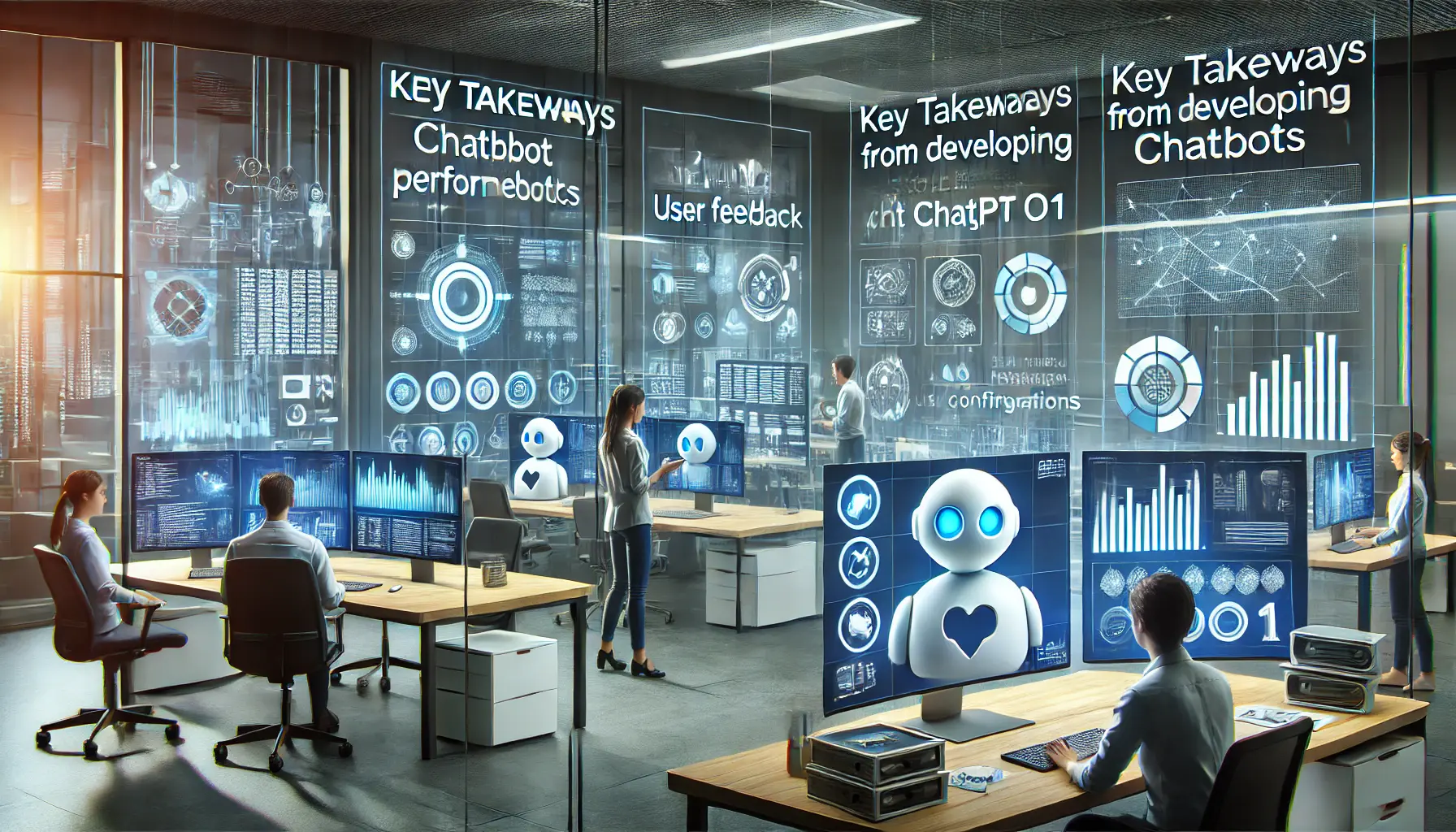
Engineers reviewing and analyzing key takeaways from developing chatbots with ChatGPT o1, optimizing performance and learning outcomes.
Key Takeaways from Developing Chatbots with ChatGPT o1
Throughout this article, we have covered essential aspects of designing, deploying, and maintaining chatbots with ChatGPT o1.
Here are some of the main points to remember:
- Knowing ChatGPT o1: This AI model enhances chatbot intelligence with its ability to process information more effectively, leading to more accurate and insightful responses.
- Setting Up the Development Environment: Ensuring proper hardware and software configurations allows for seamless integration and optimal performance.
- Designing and Training the Chatbot: Following best practices such as user-centered design, context awareness, and reinforcement learning results in a highly interactive chatbot experience.
- Deployment and Maintenance: Secure deployment with API integrations, cloud scalability, and continuous monitoring is crucial to sustaining a chatbot’s performance.
- Real-World Applications: Industries such as e-commerce, education, and customer service are benefiting from ChatGPT o1-powered chatbots through automation, personalization, and enhanced user experiences.
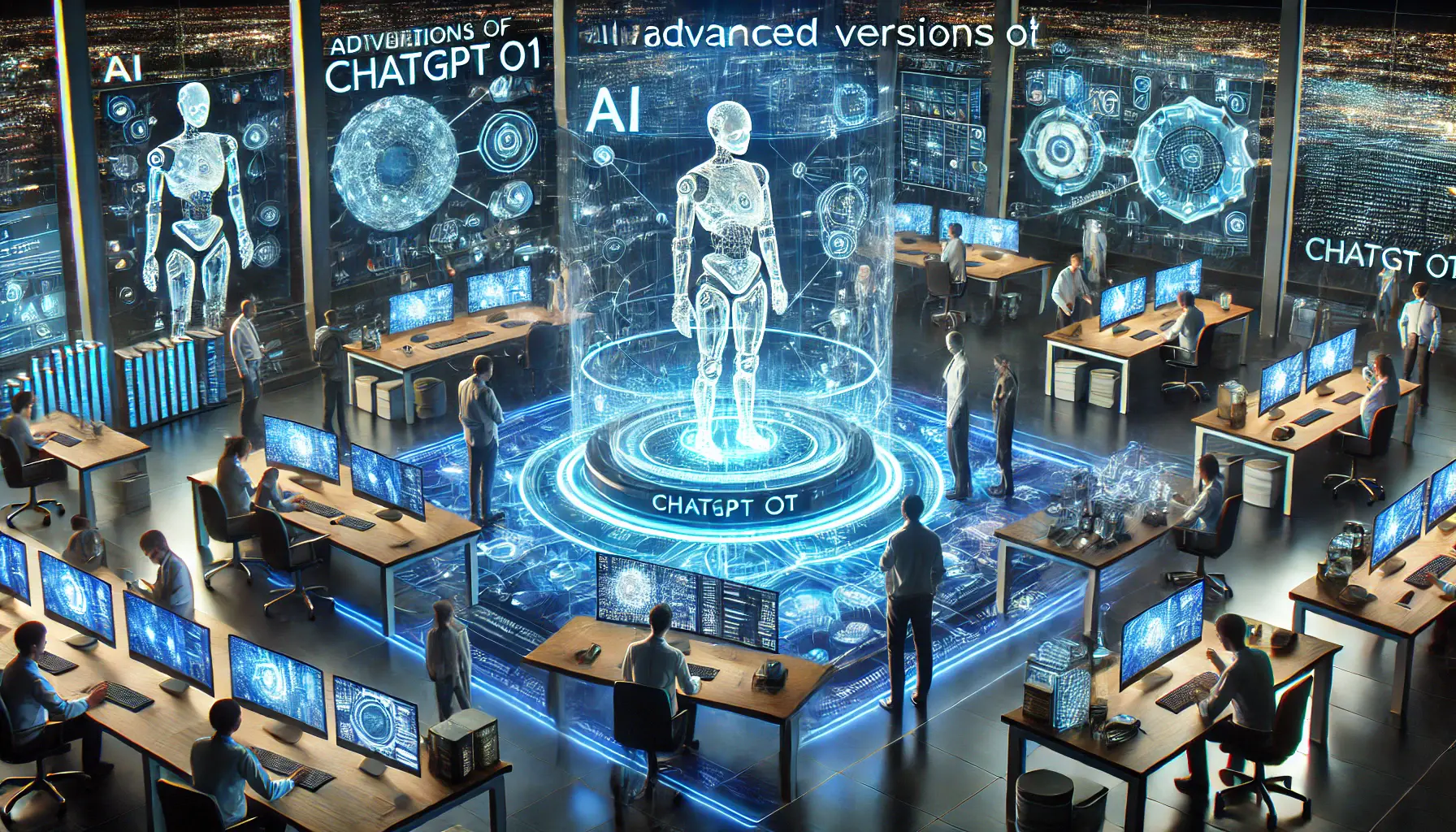
Engineers working with next-generation versions of ChatGPT o1 in a futuristic AI lab, showcasing the future potential of chatbots.
The Future of ChatGPT o1 Chatbots
As AI technology advances, the potential of ChatGPT o1 chatbots will continue to grow.
Developers and companies will be able to refine chatbot interactions, making them even more human-like and efficient.
Some anticipated advancements include:
- More Adaptive Learning: AI algorithms that learn continuously from user interactions and adjust responses in real-time.
- Expanded Multimodal Capabilities: The ability to process not just text but also voice, images, and videos, creating a more comprehensive AI assistant.
- Deeper Integration with Business Applications: Seamless integration with CRMs, analytics tools, and business platforms to provide real-time data-driven insights.
By keeping up with these trends and consistently refining AI-driven chatbot models, businesses can unlock the full potential of ChatGPT o1, revolutionizing customer engagement and optimizing operations.
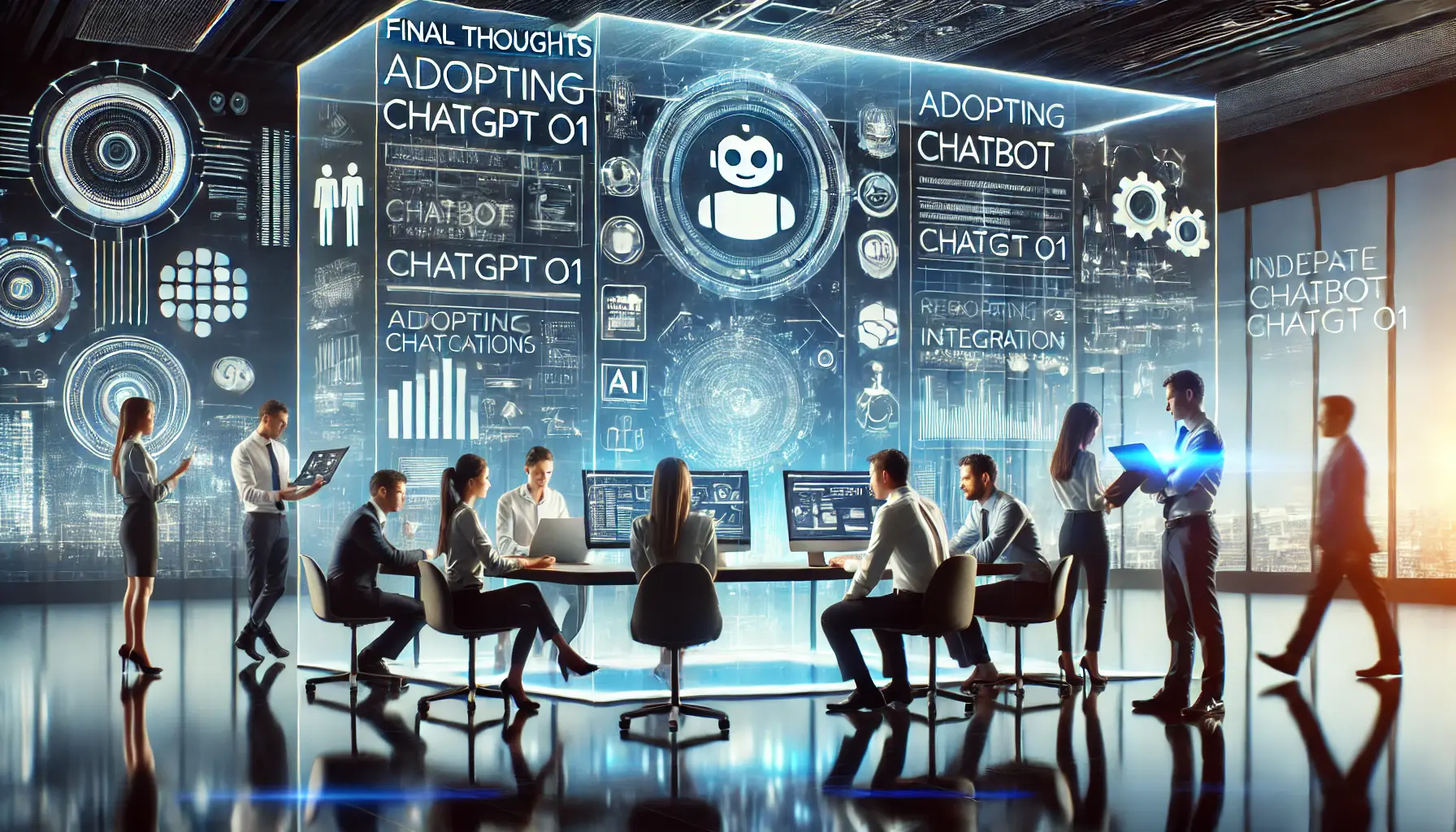
Engineers and AI experts analyzing strategies and performance data for the adoption of ChatGPT o1 in different industries.
Final Thoughts on Adopting ChatGPT o1
Whether you are an entrepreneur, developer, or AI enthusiast, adopting ChatGPT o1 for chatbot development offers numerous benefits.
With strategic planning, effective training, and well-executed deployment, you can create chatbots that improve not only operational efficiency but also user satisfaction.
The era of AI-powered chatbots is still in its early stages, and ChatGPT o1 is leading the way.
By integrating this advanced AI model into your chatbot applications, you can stay ahead of the competition, simplify complex interactions, and deliver intelligent, seamless conversations that meet user expectations.
The future of ChatGPT o1 chatbots lies in their ability to adapt, learn from interactions, and integrate with multimodal inputs for enhanced AI-driven experiences.
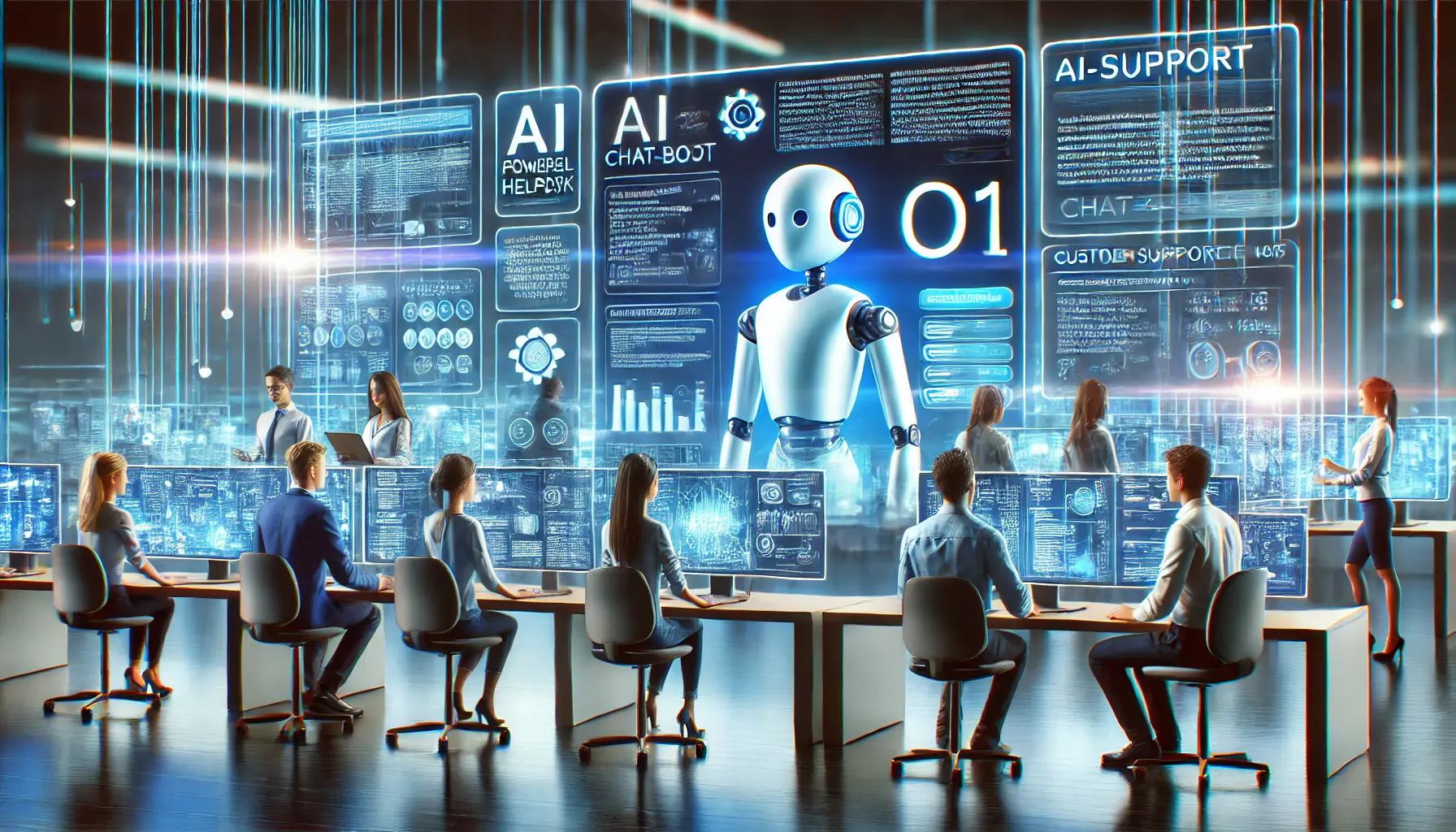
ChatGPT o1 assisting users by answering frequently asked questions in a modern digital helpdesk environment.
Frequently Asked Questions Regarding ChatGPT o1
ChatGPT o1 is OpenAI’s latest AI model focused on enhancing chatbot reasoning and problem-solving abilities to facilitate more accurate and context-aware interactions.
Compared to its predecessors, ChatGPT o1 ‘thinks’ before responding, allowing it to handle more complex tasks with greater accuracy and depth.
Integration requires a modern 64-bit processor, at least 8 GB RAM, 10 GB of available disk space, and a stable internet connection.
Collect relevant domain-specific data, fine-tune the pre-trained model using this data, and update it regularly to ensure accuracy and relevance.
Select the appropriate platforms, ensure scalable infrastructure, implement secure APIApplication Programming Interface, a set of protocols for building and integrating software applications. integrations, and monitor performance and security regularly.
ChatGPT o1-powered chatbots can be applied in customer support, e-commerce, and education, enhancing user experience and operational efficiency through intelligent automation.
As of December 2024, OpenAI offers ChatGPT Pro, a $200 per month plan, which provides unlimited access to the o1 model along with advanced features.
ChatGPT o1 may collect user data, including text inputs and geolocationThe identification of the geographic location of a device or user using GPS, Wi-Fi, or IP address data., to improve performance.
Users should refer to OpenAI’s privacy policy for more details.
Yes, ChatGPT o1 supports various input formats, including text, images, and audio, enabling more flexible and dynamic customer interactions.
